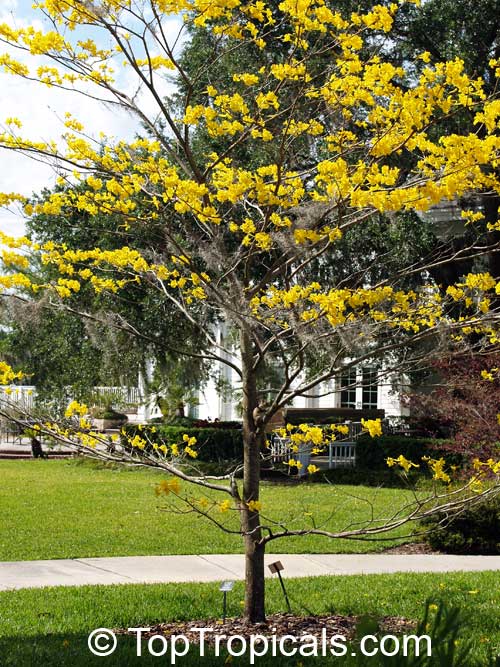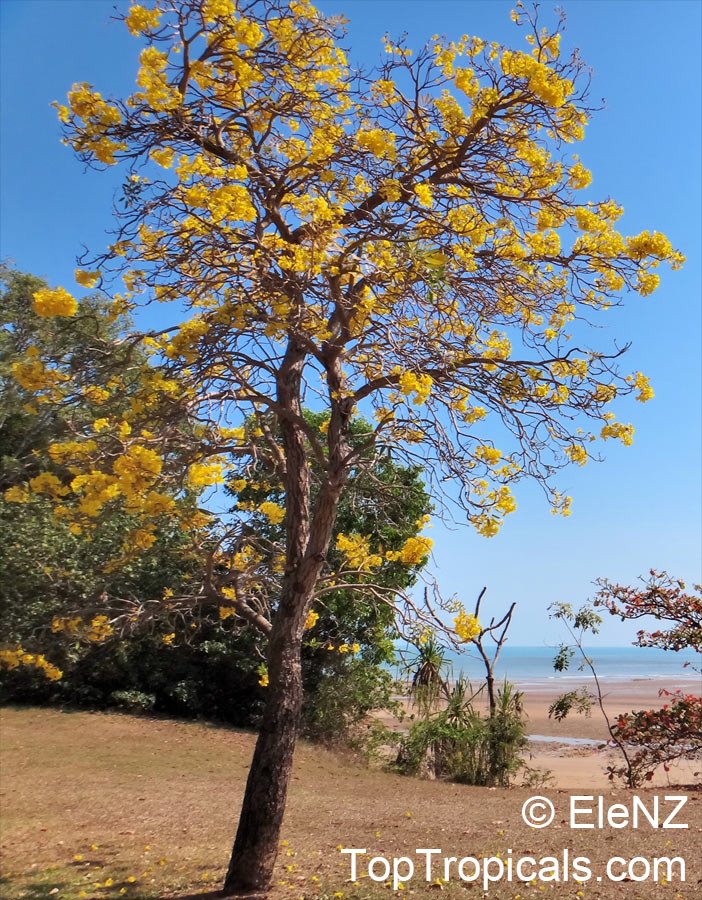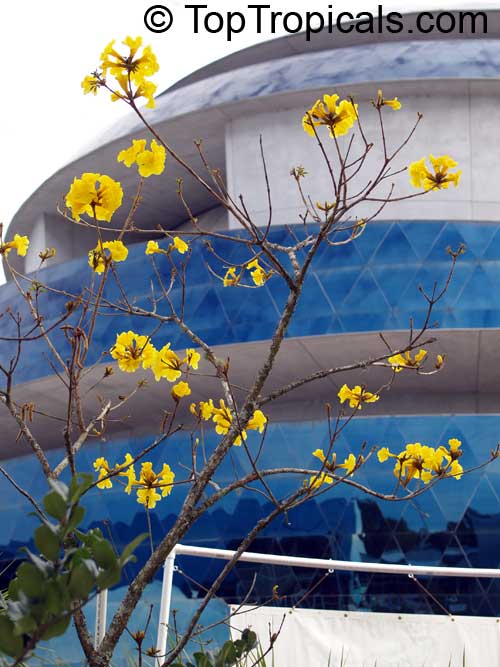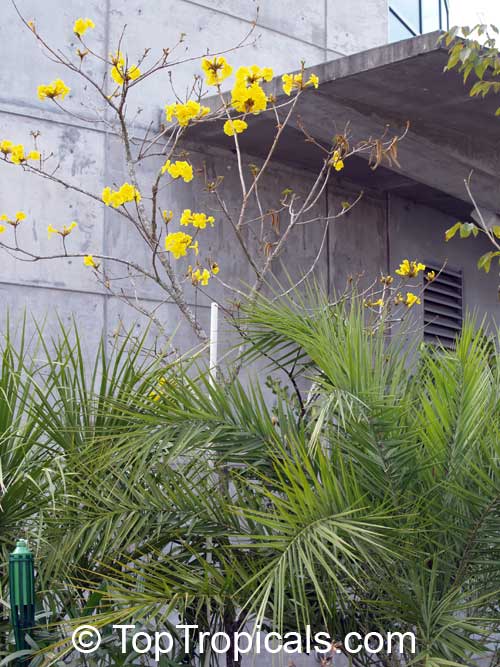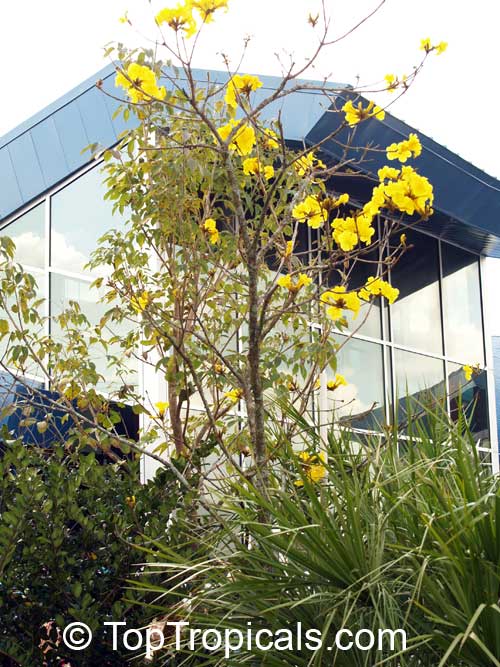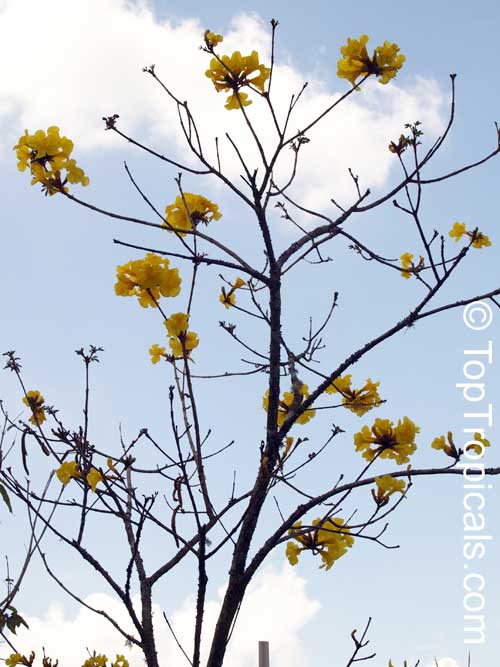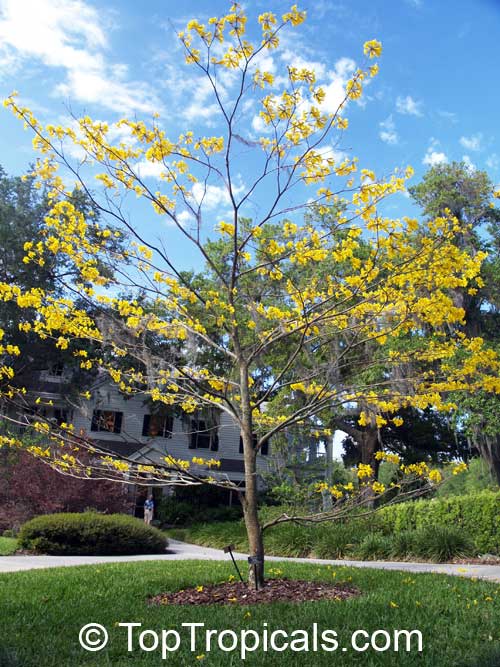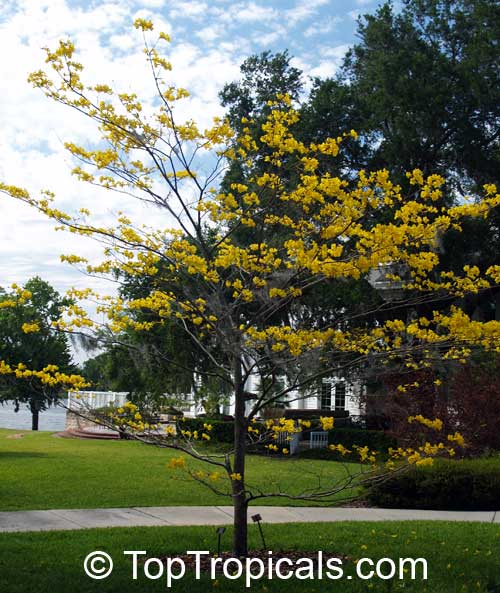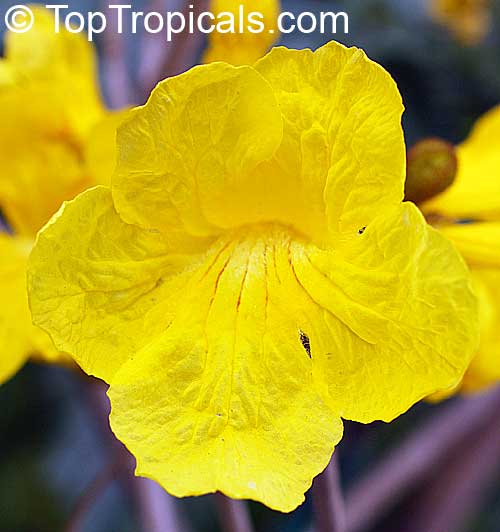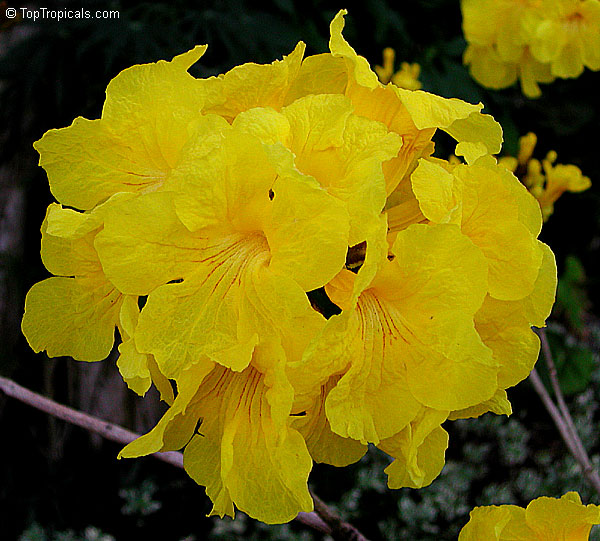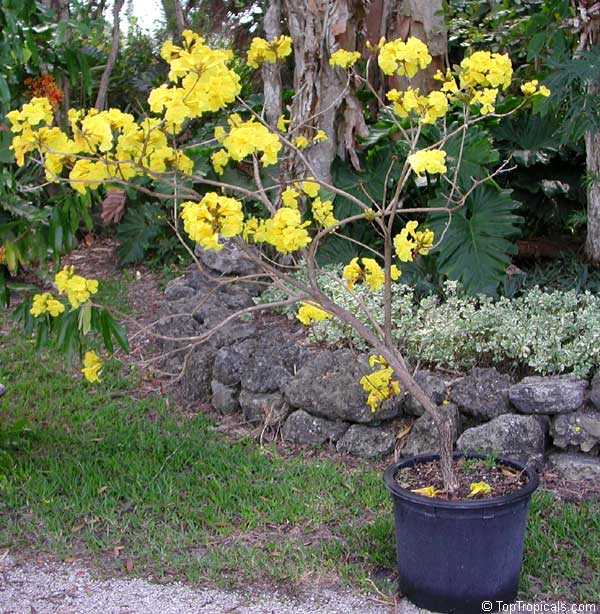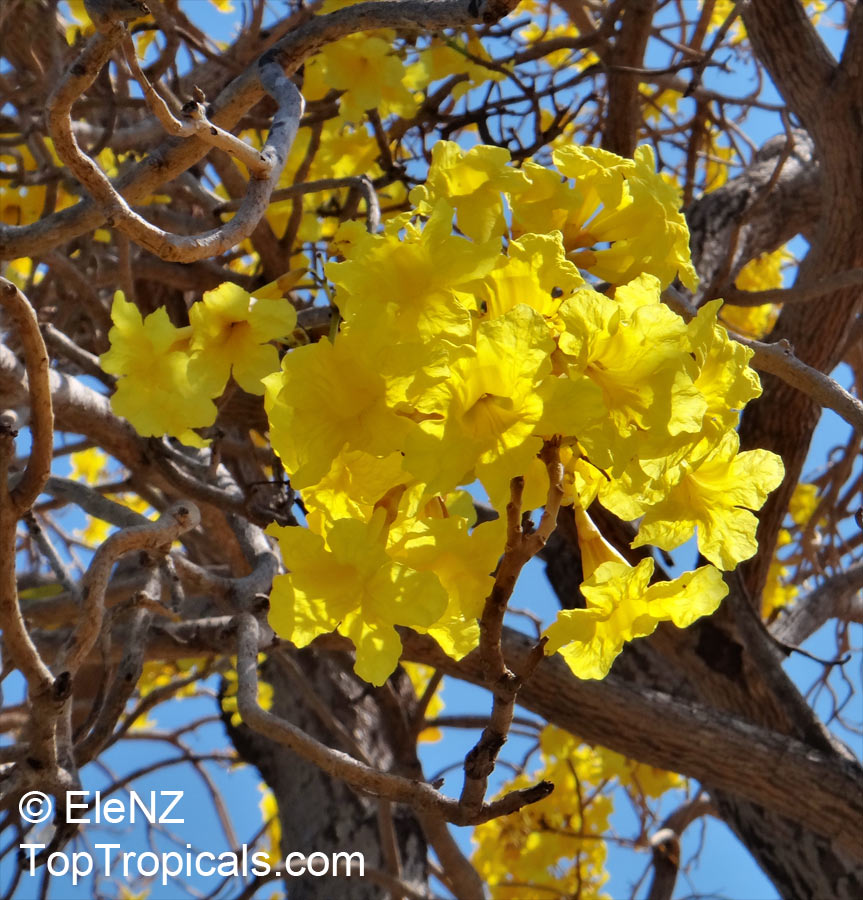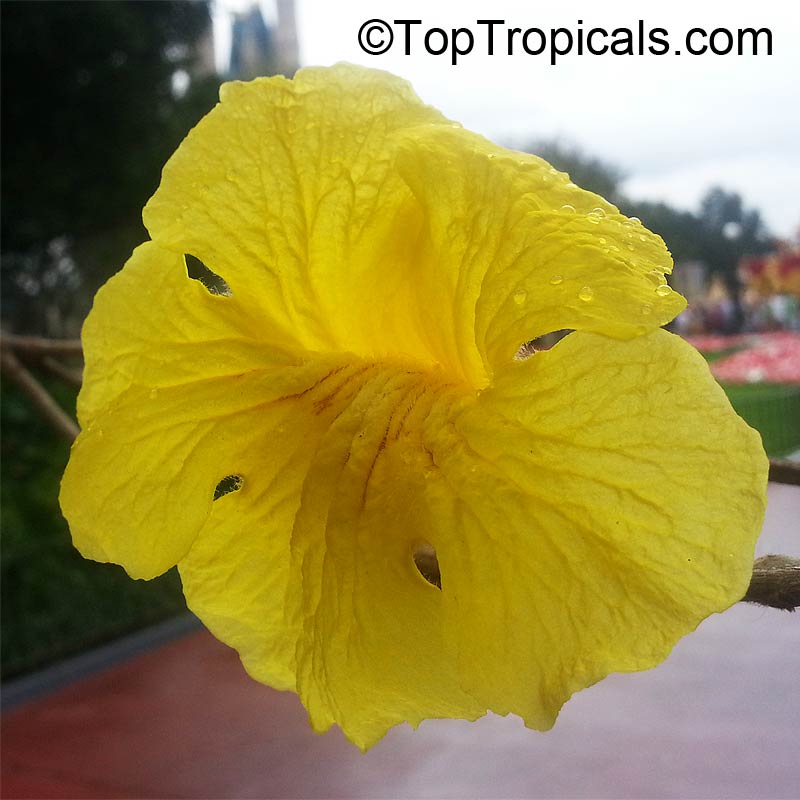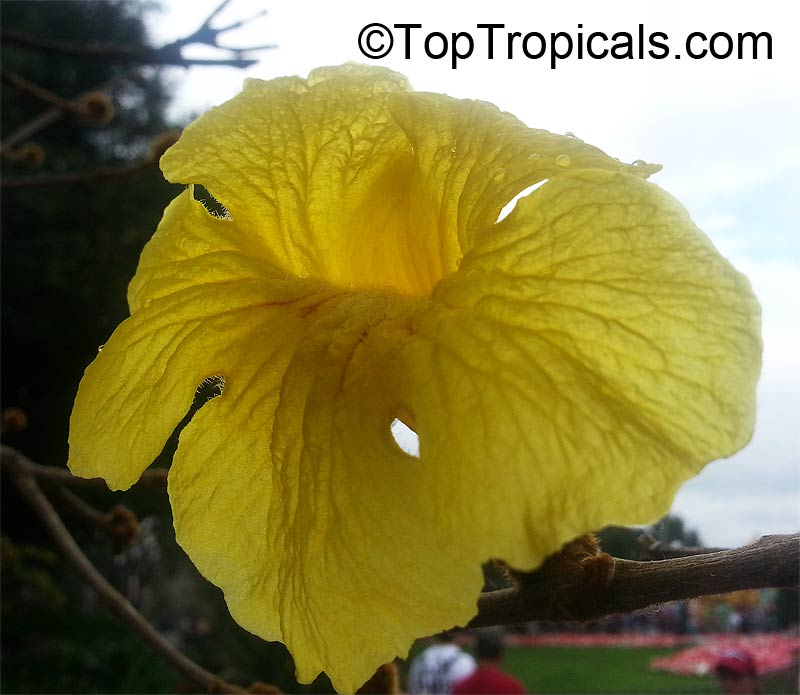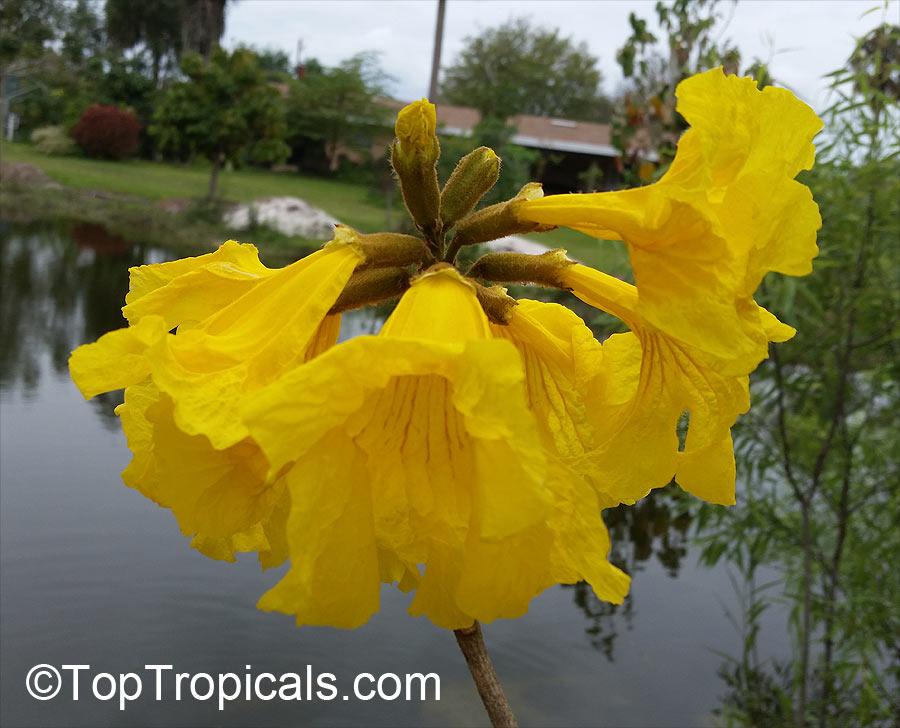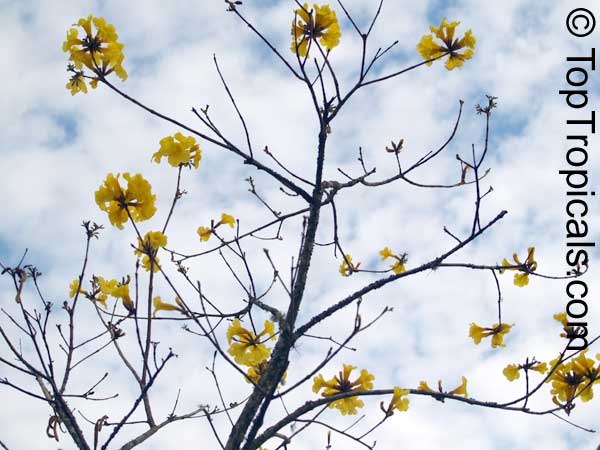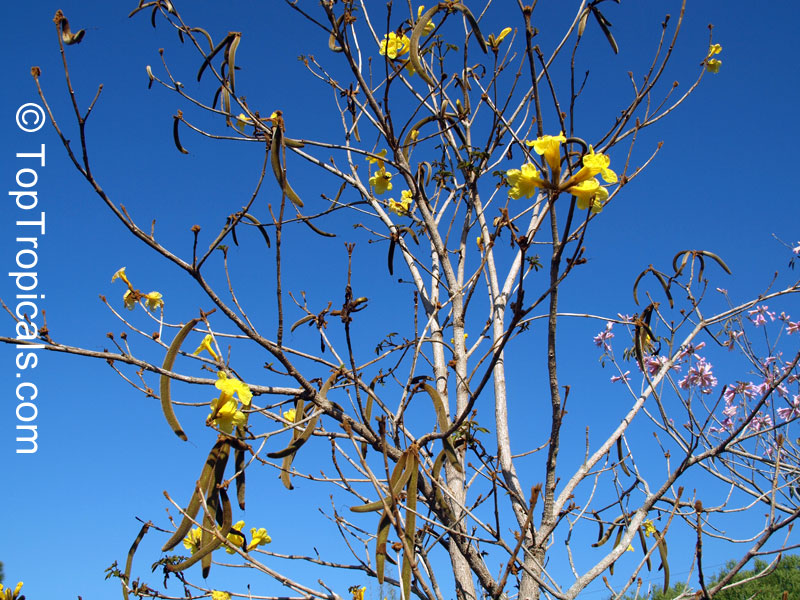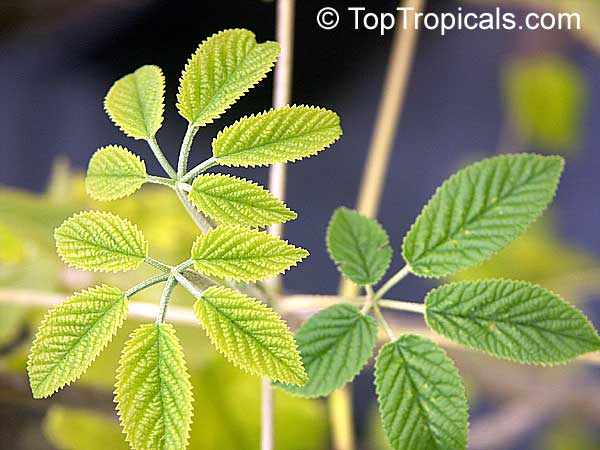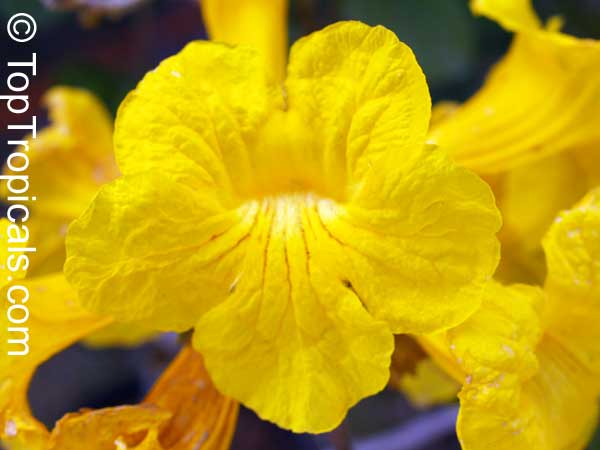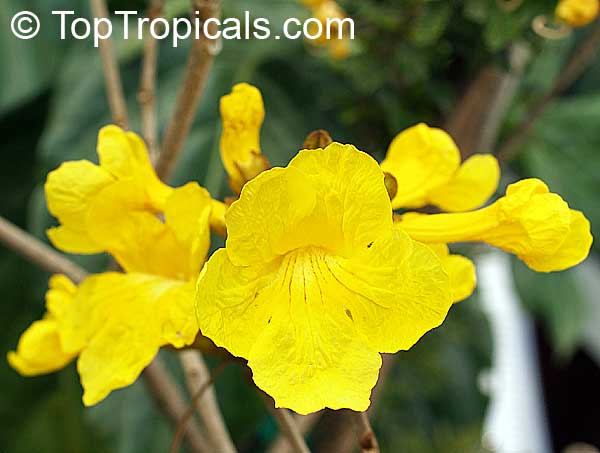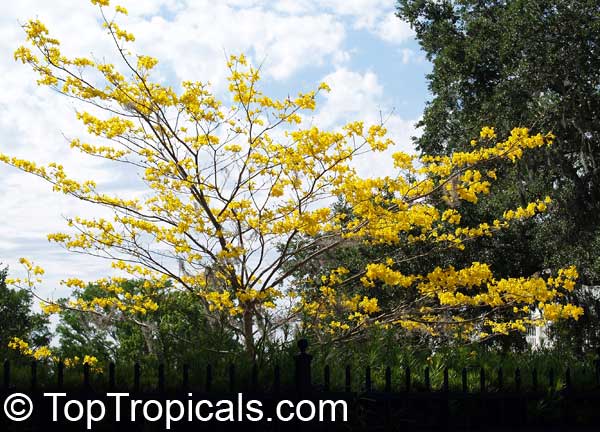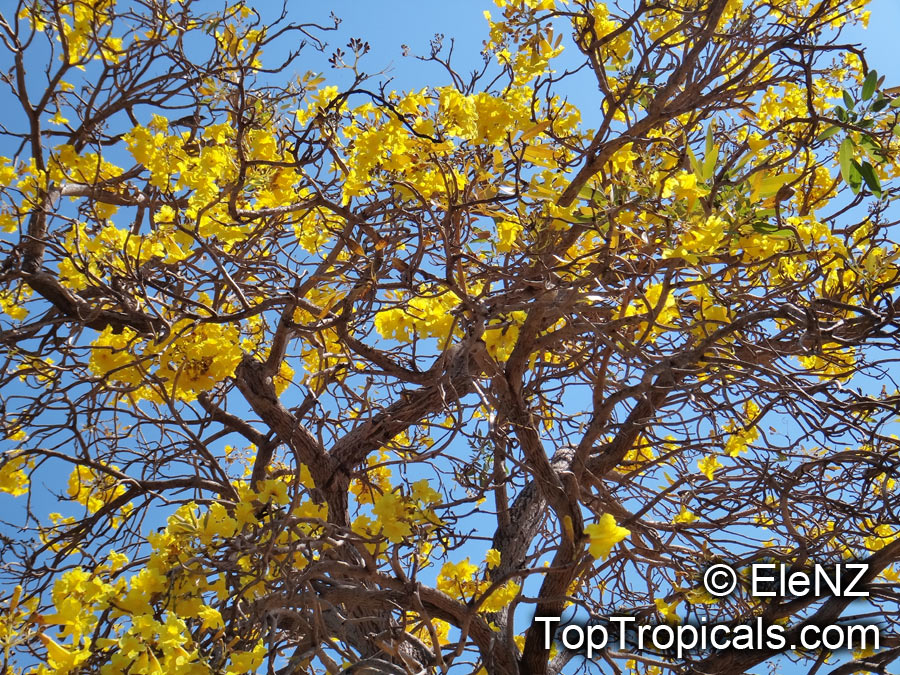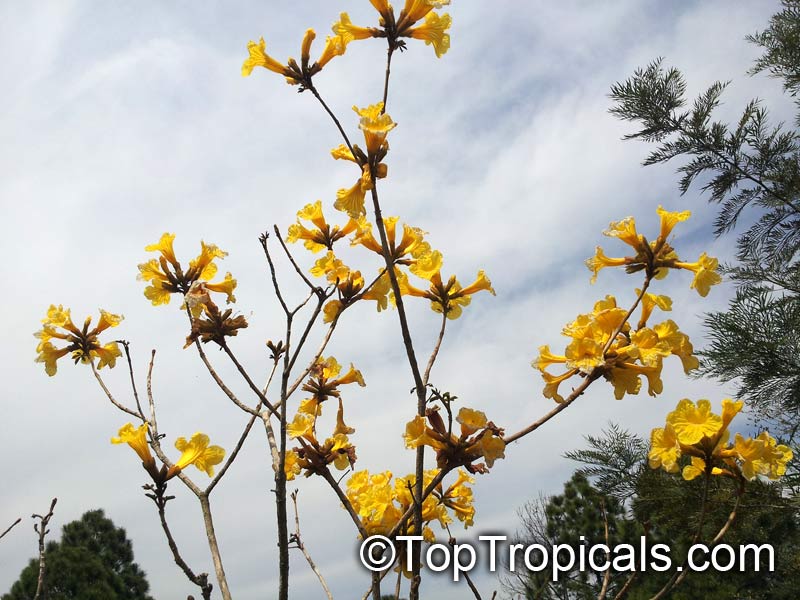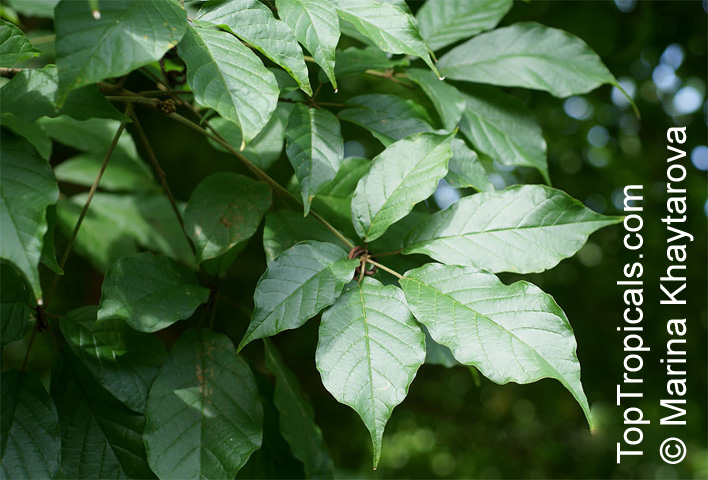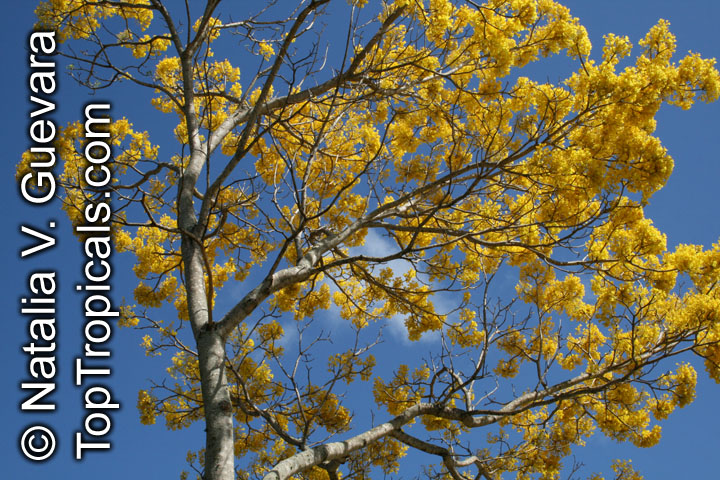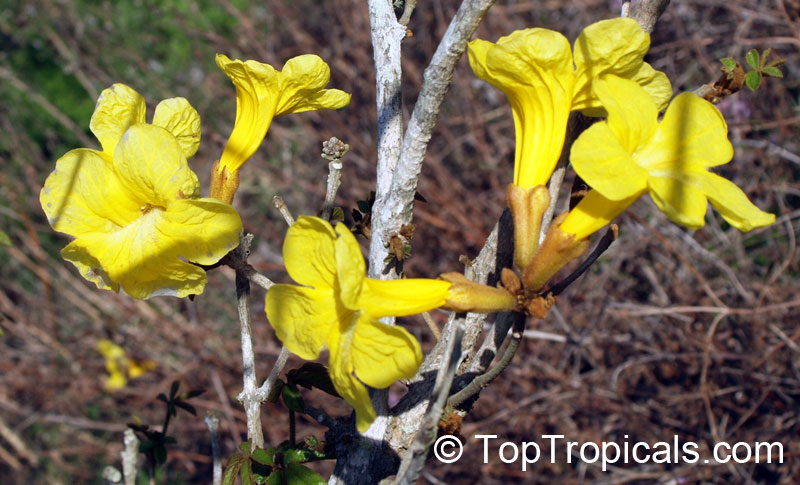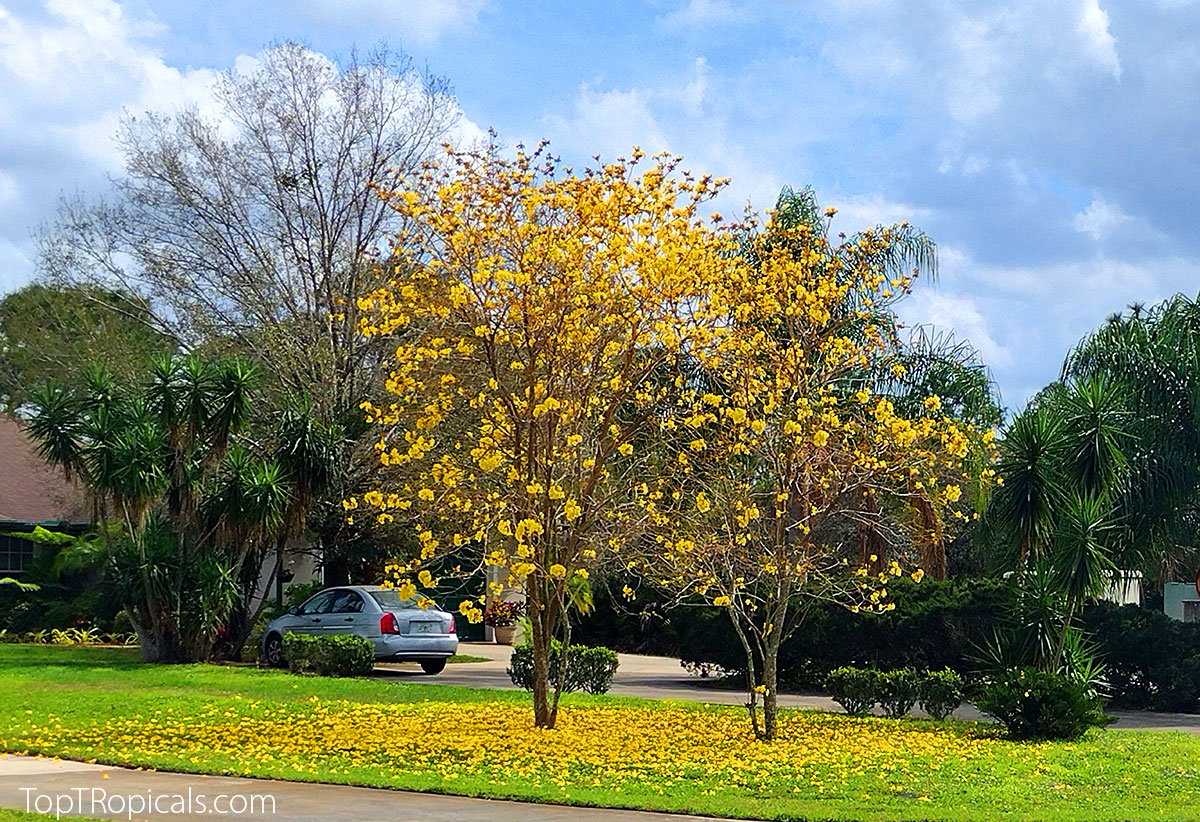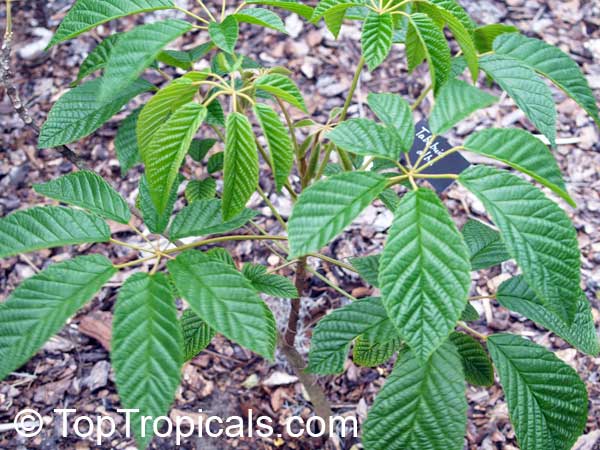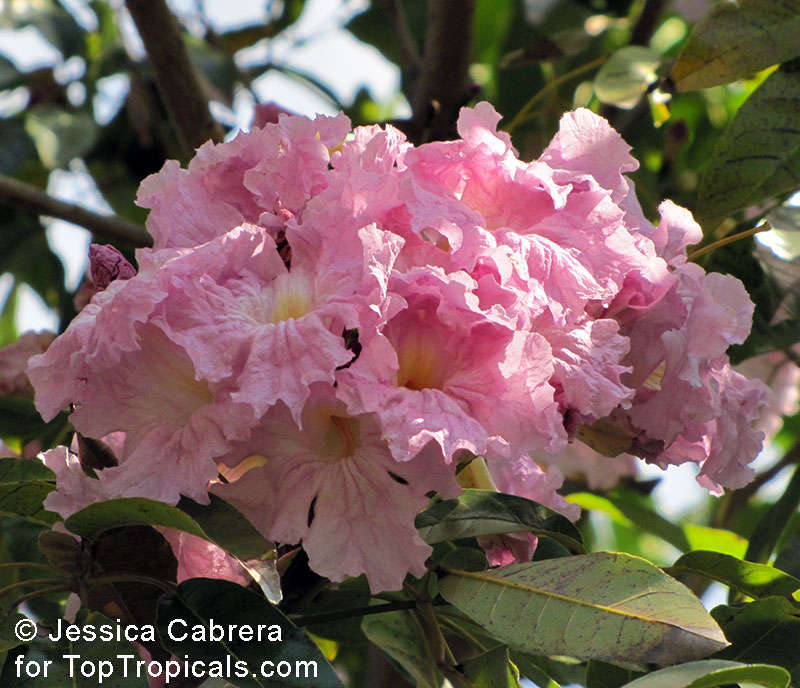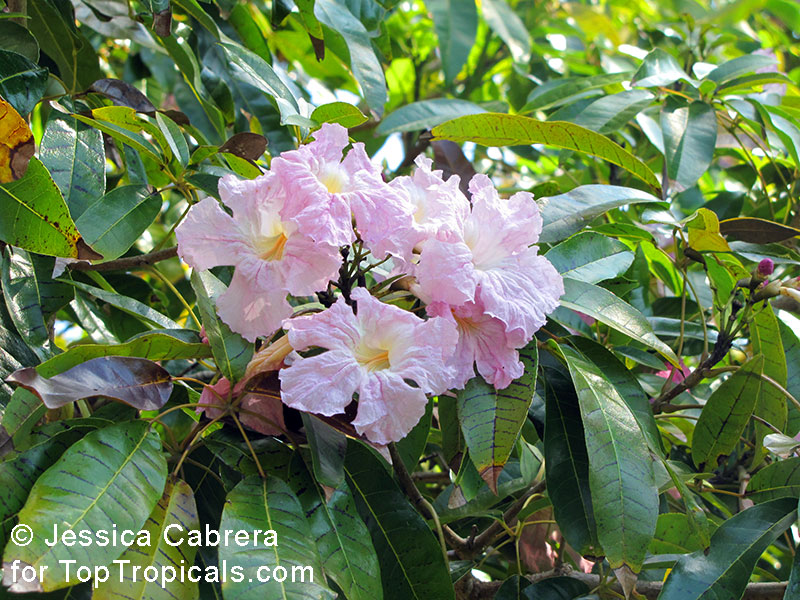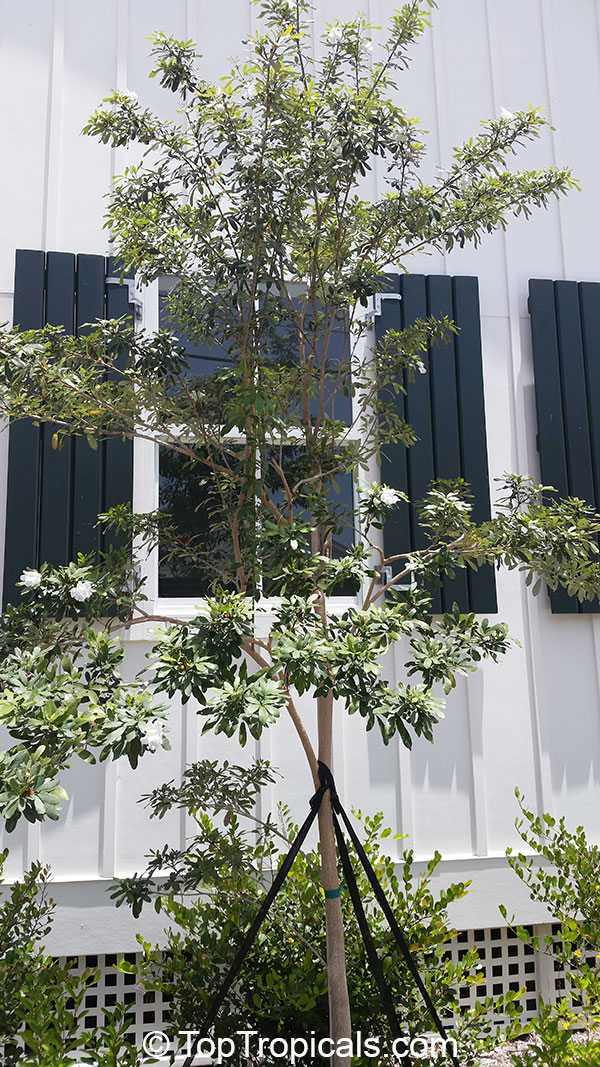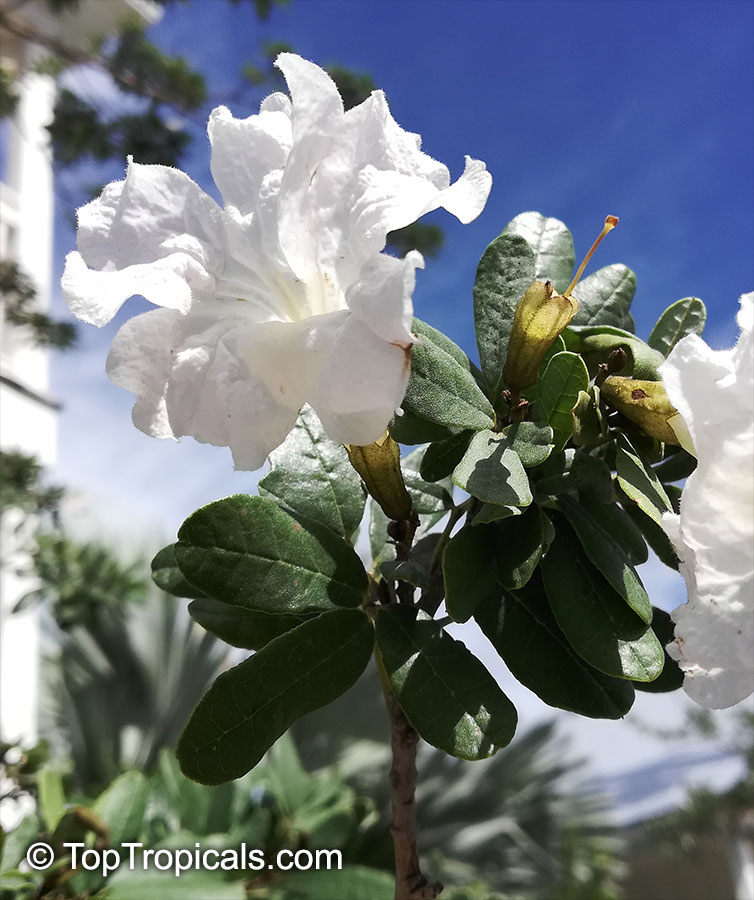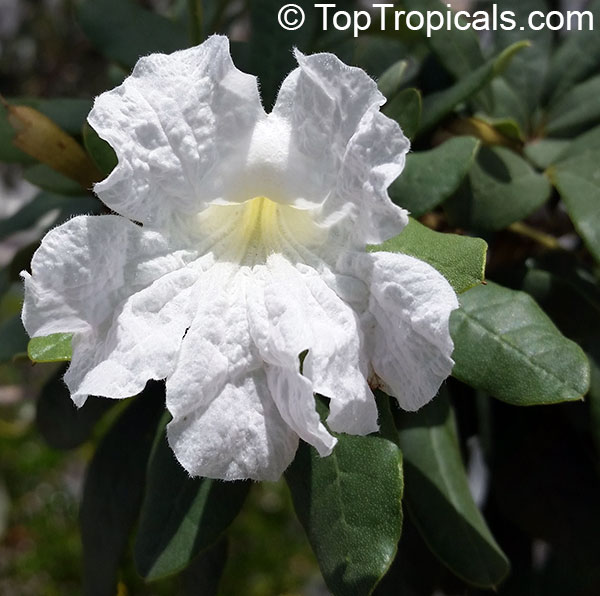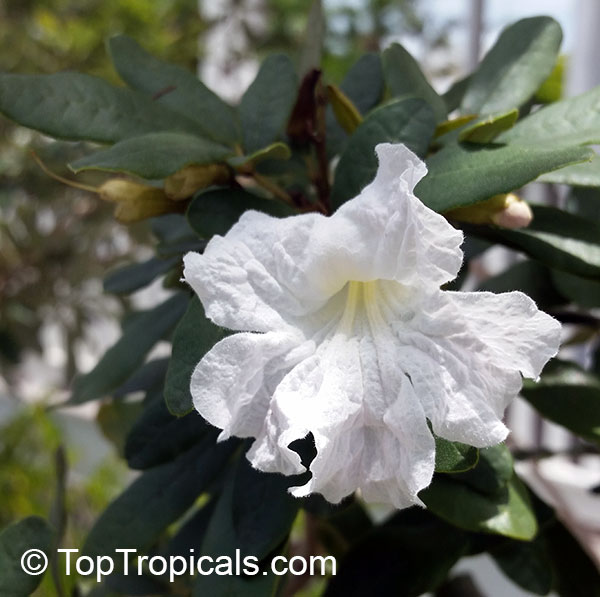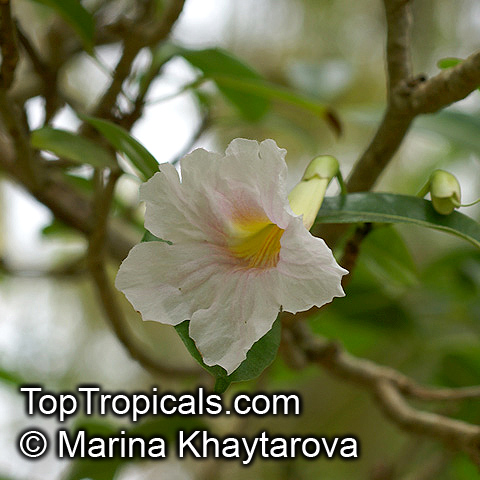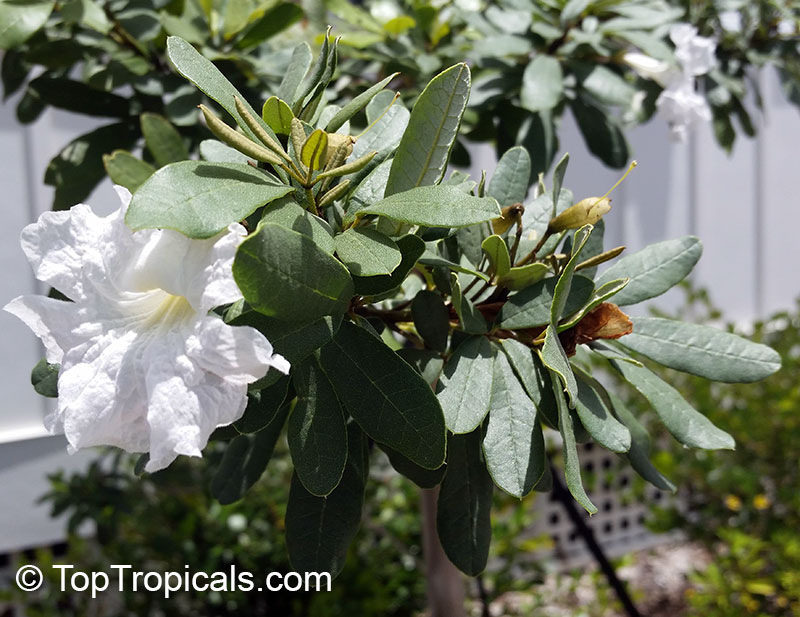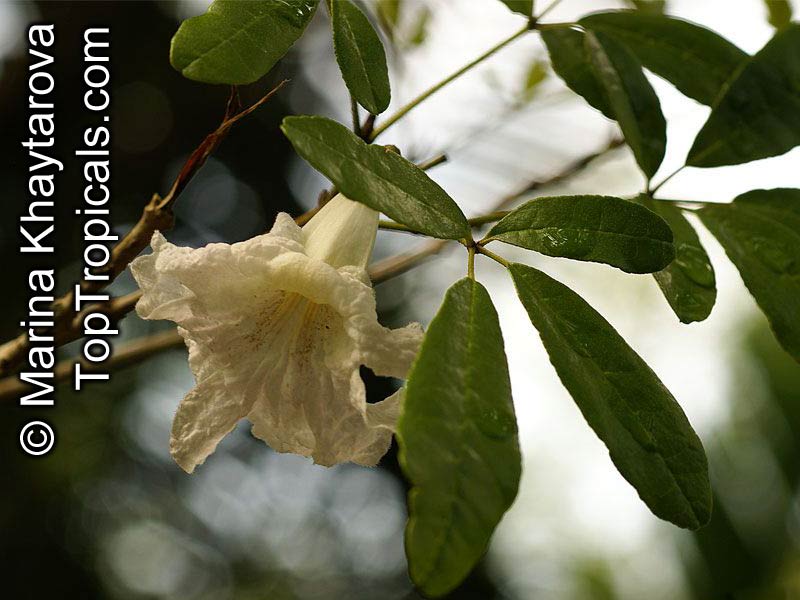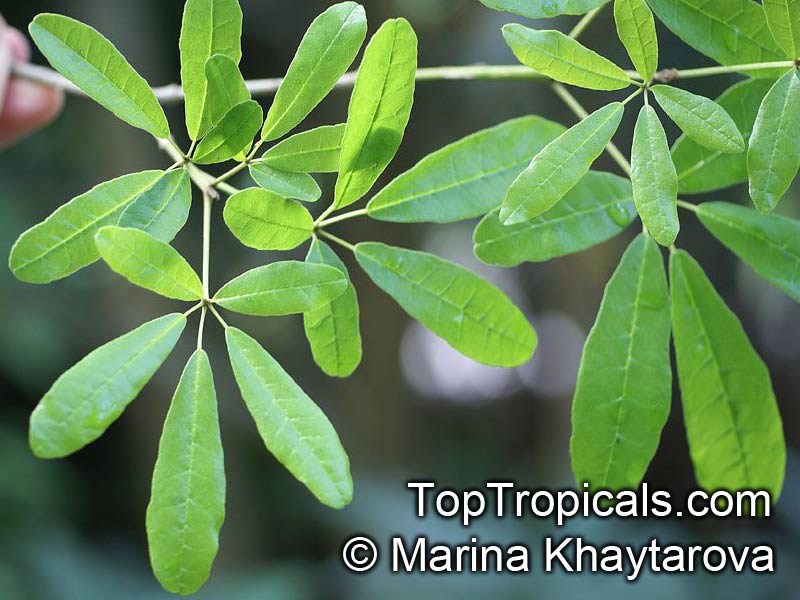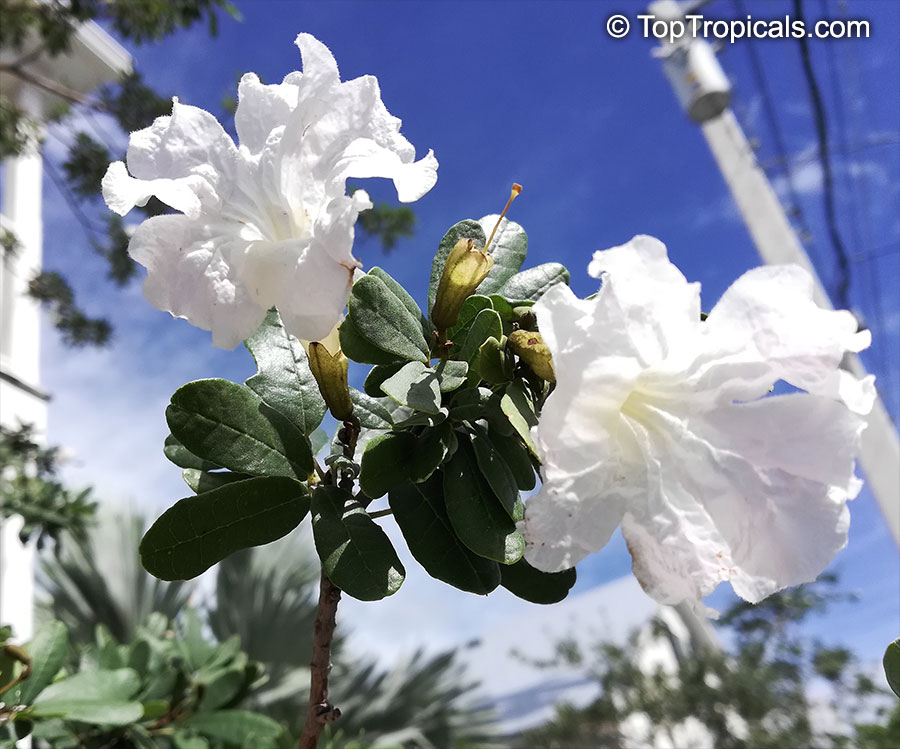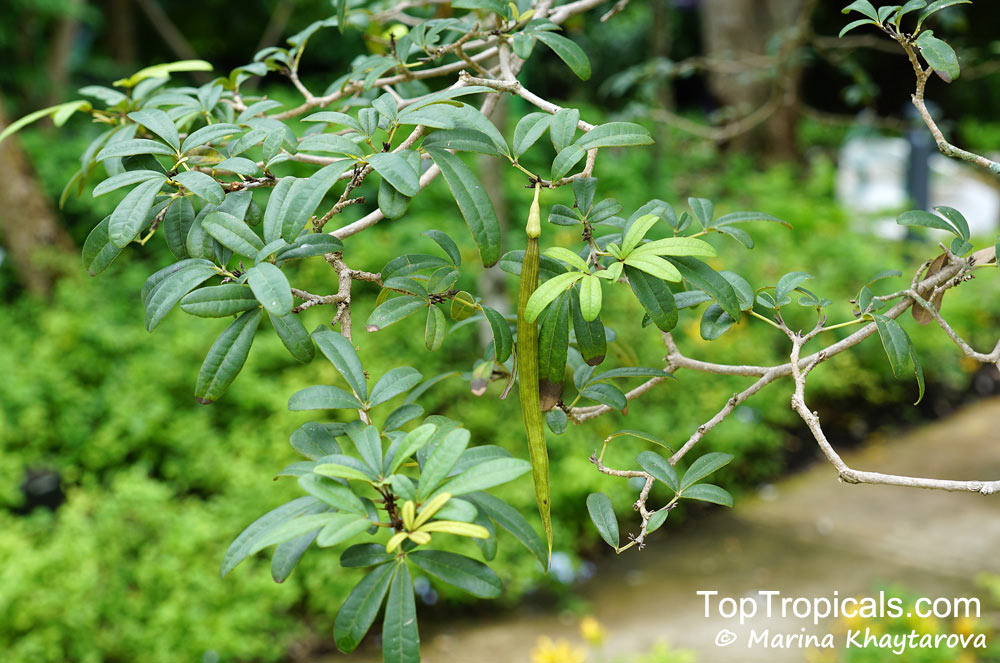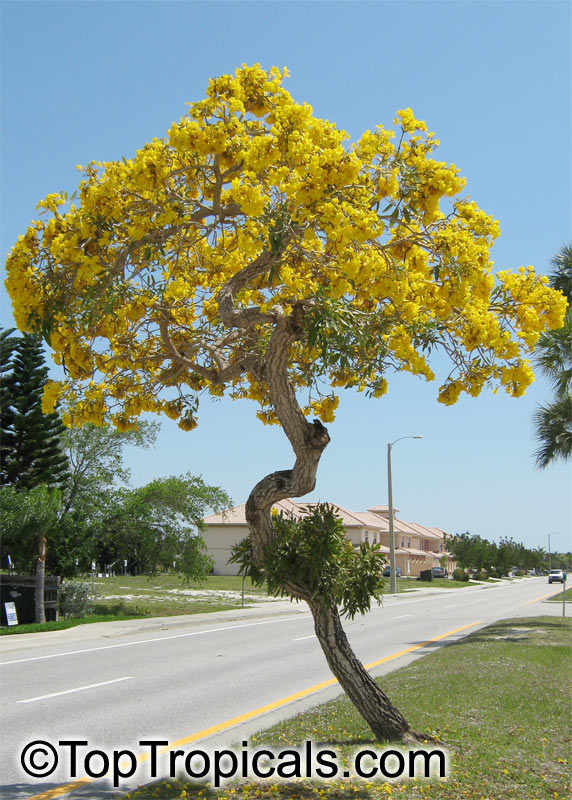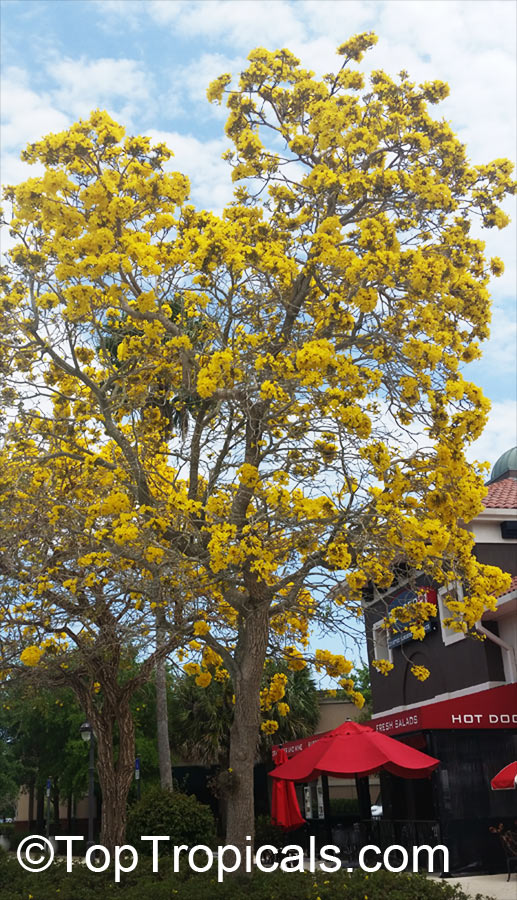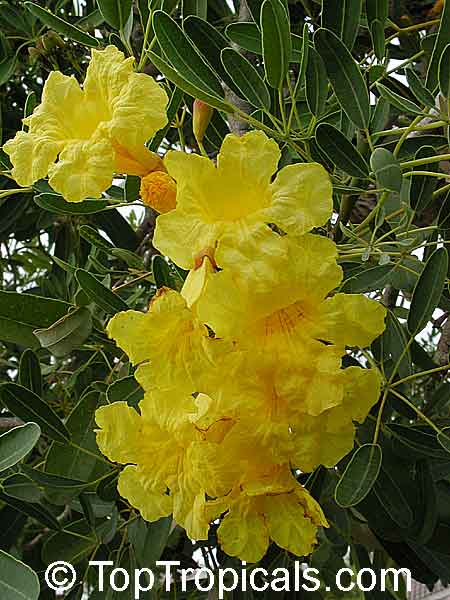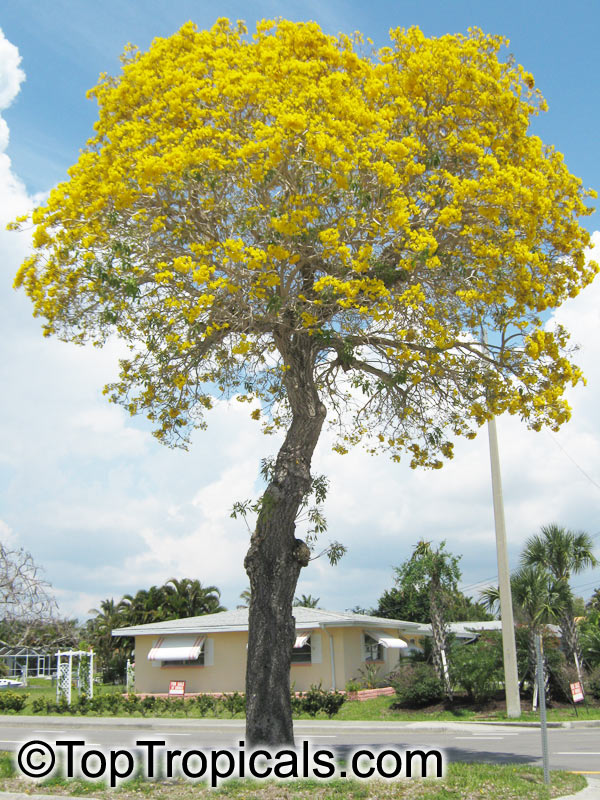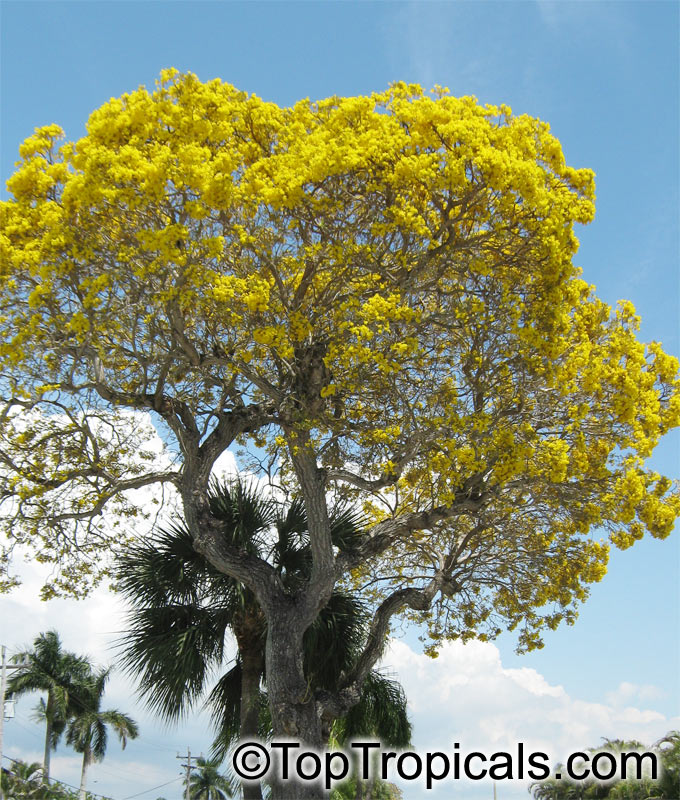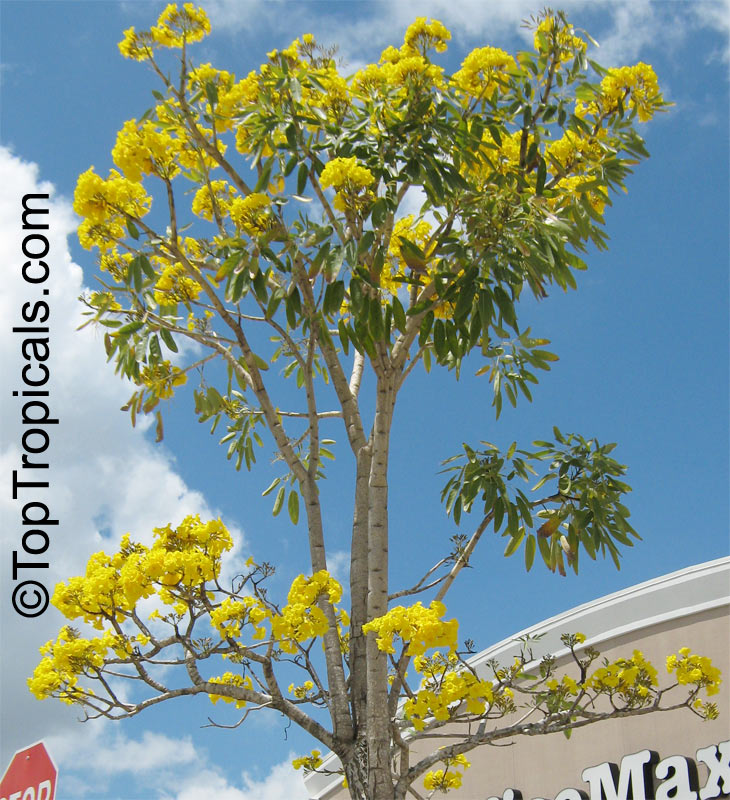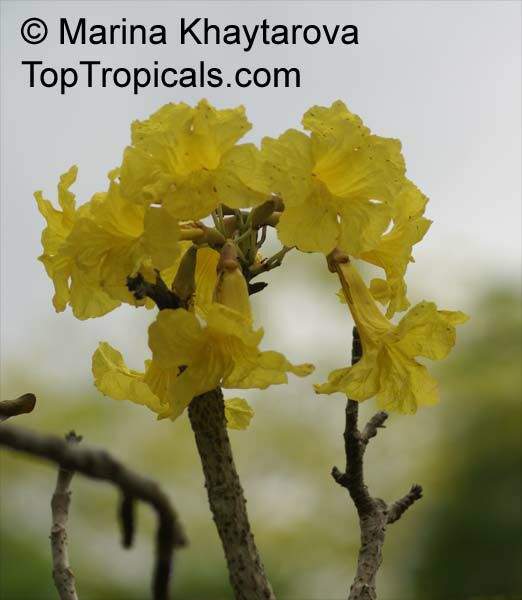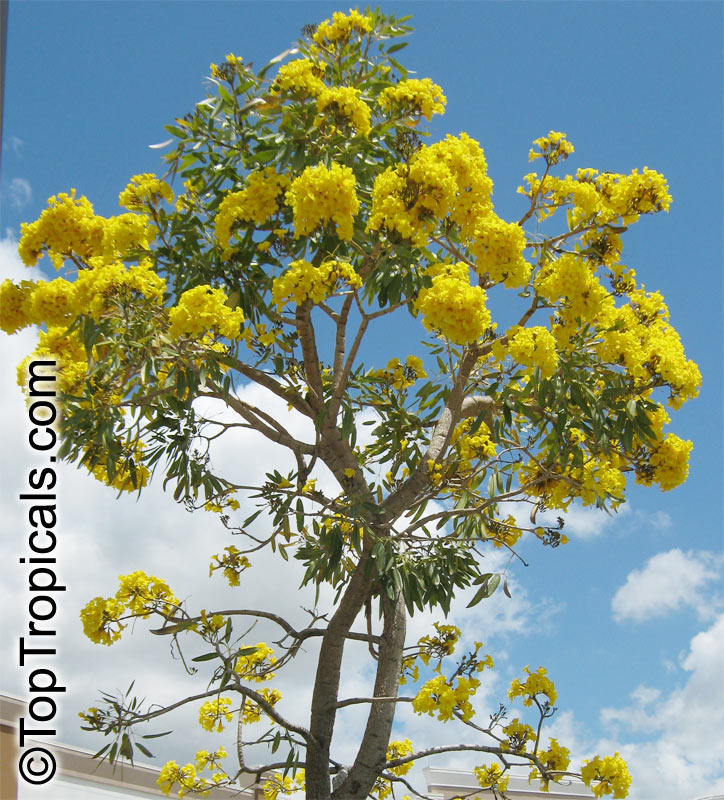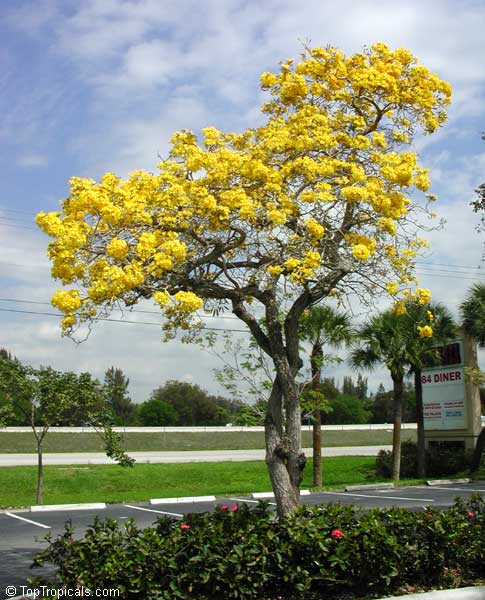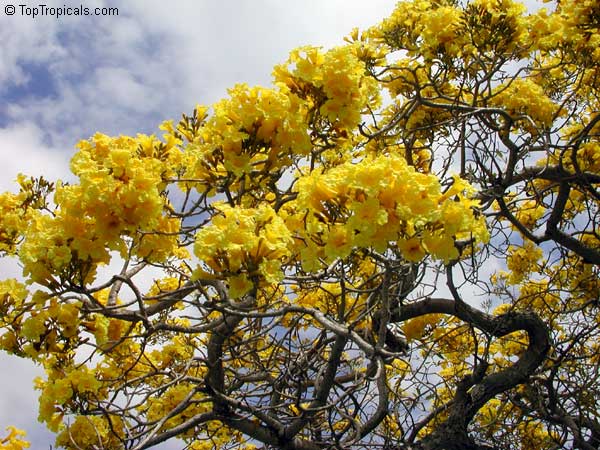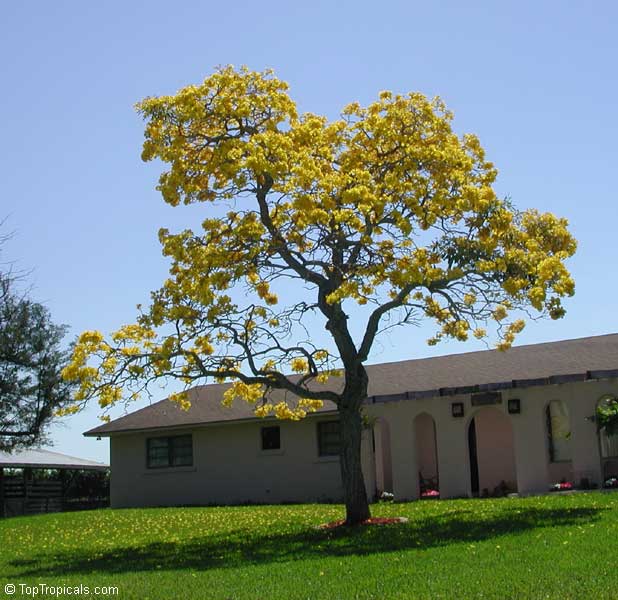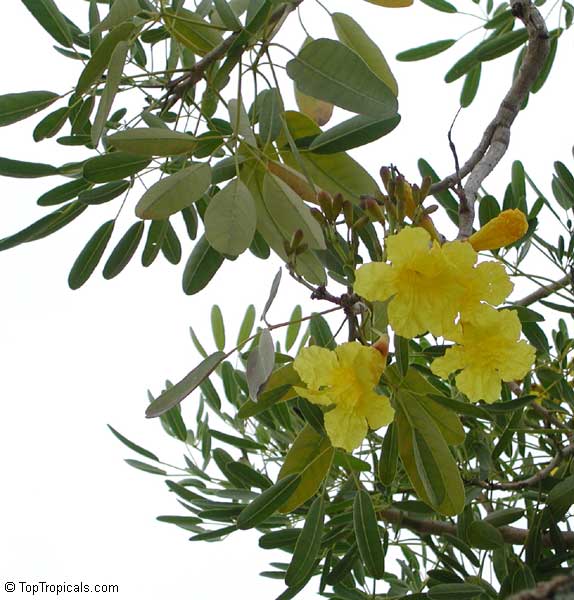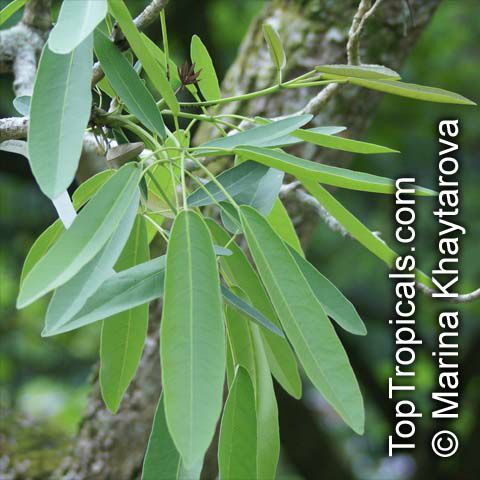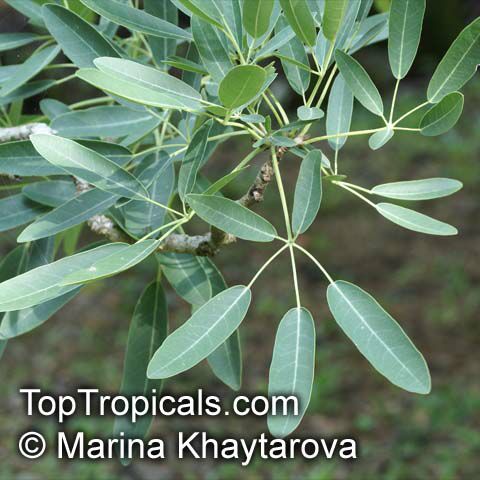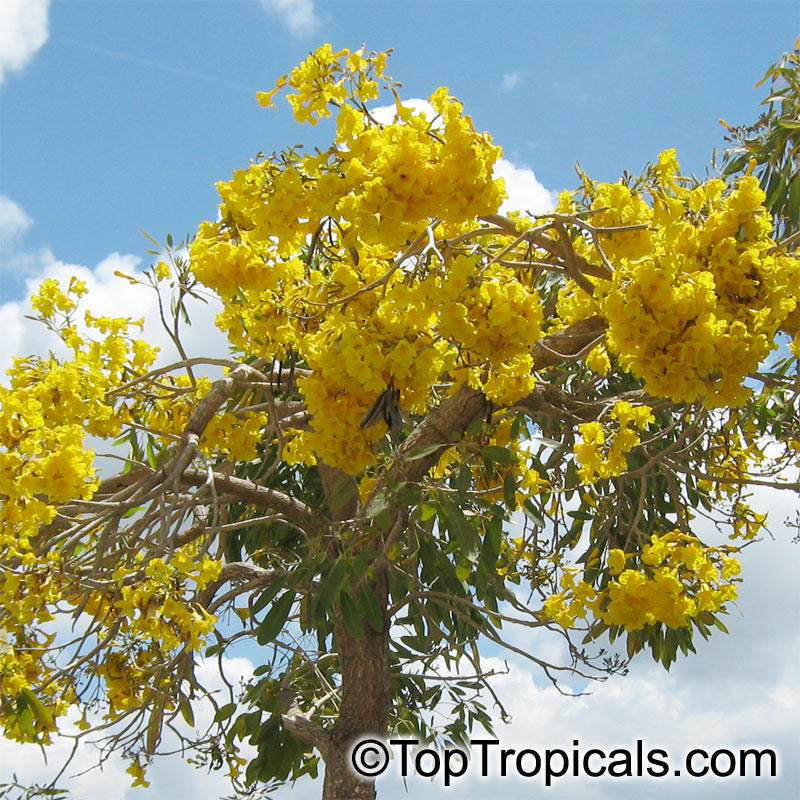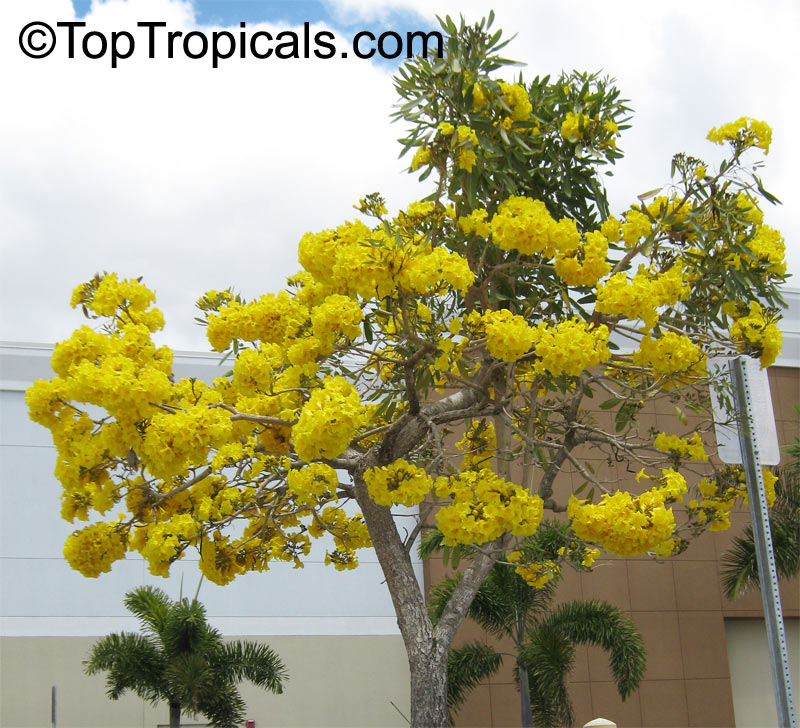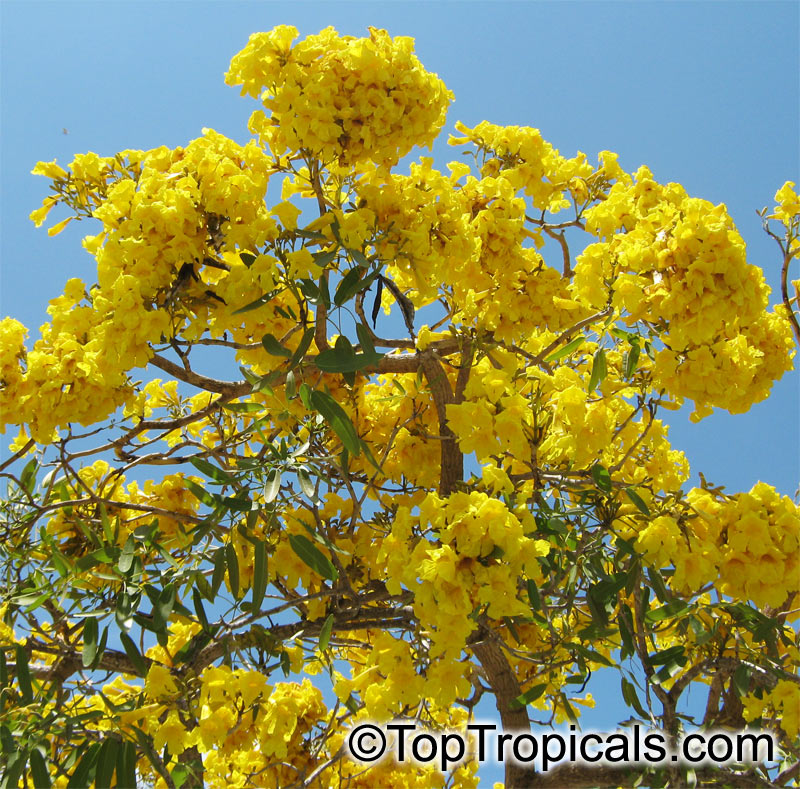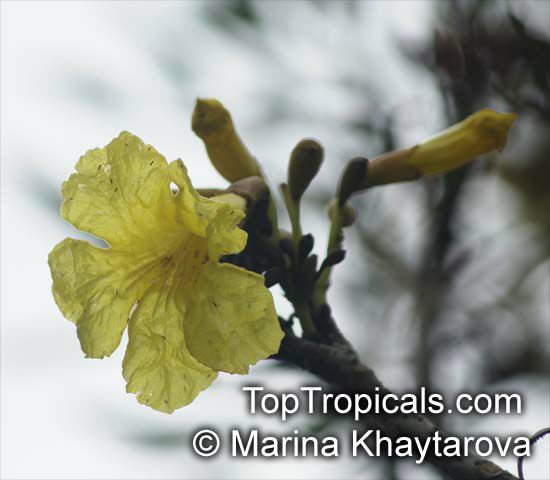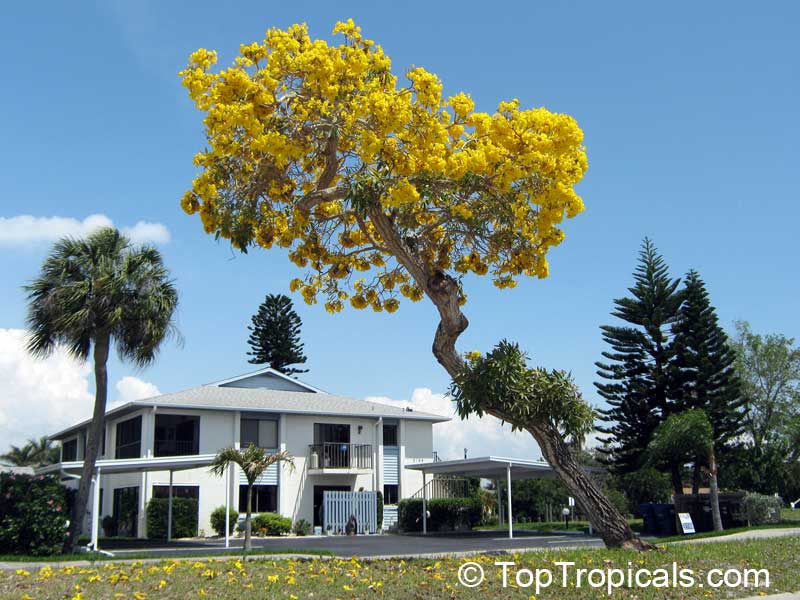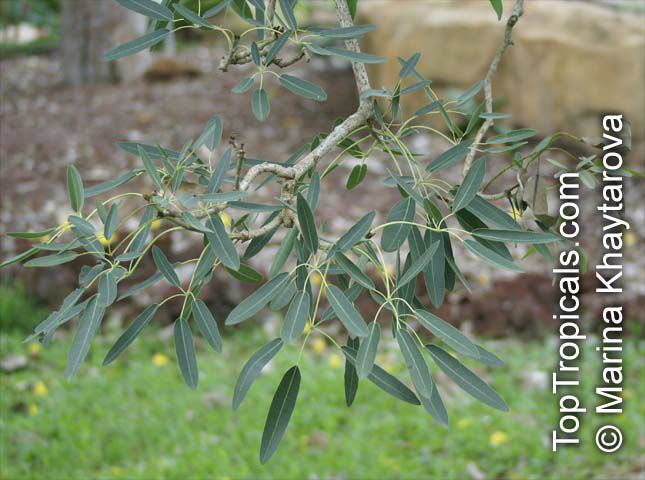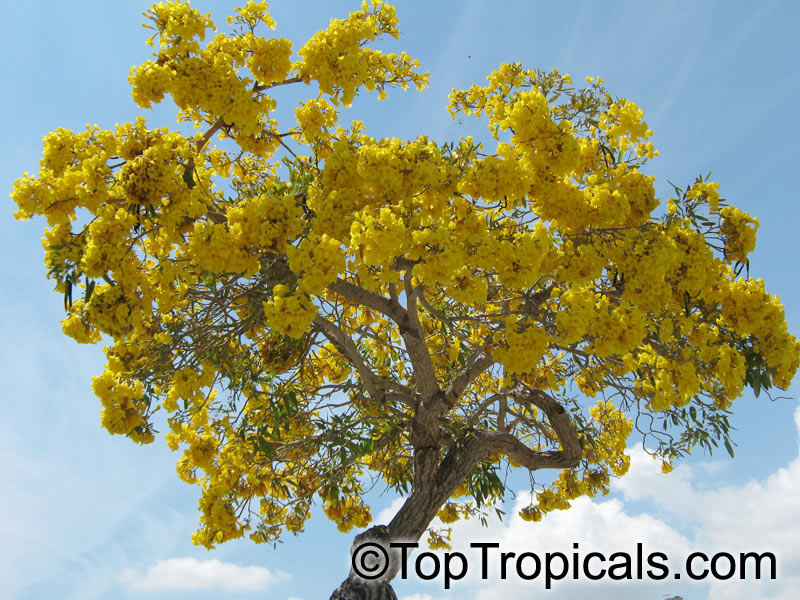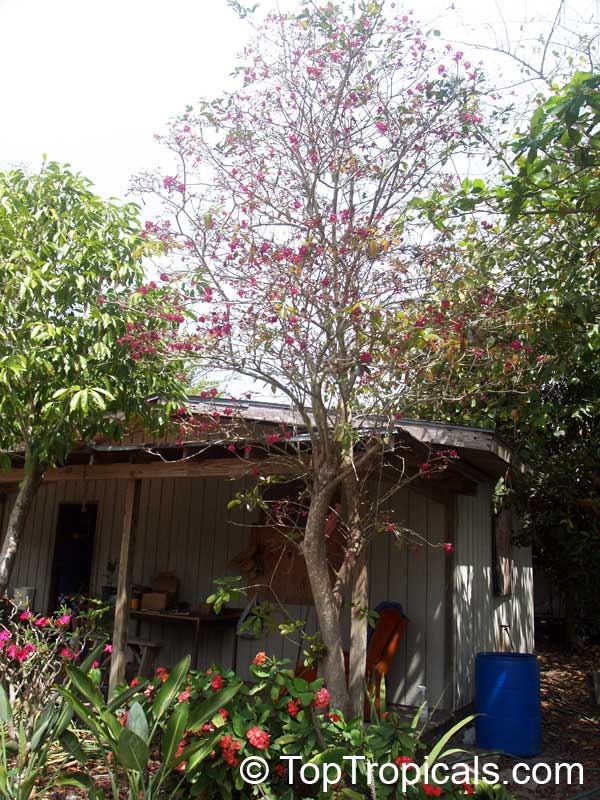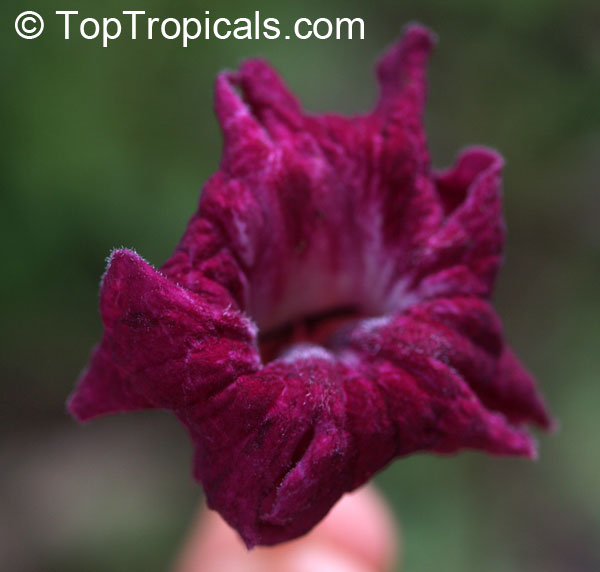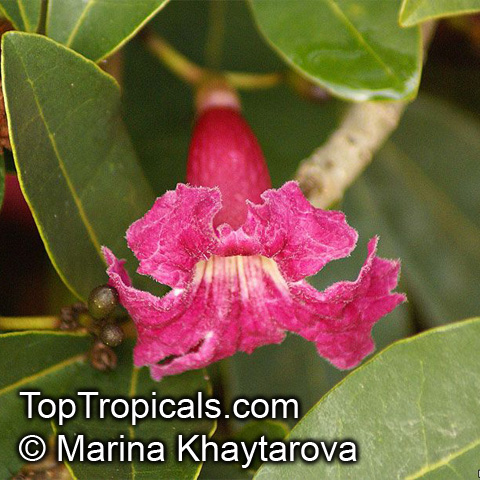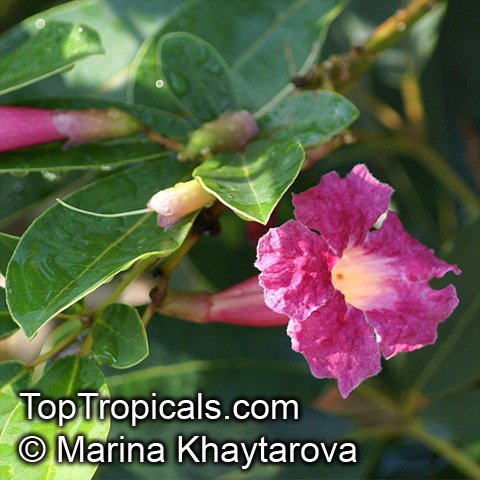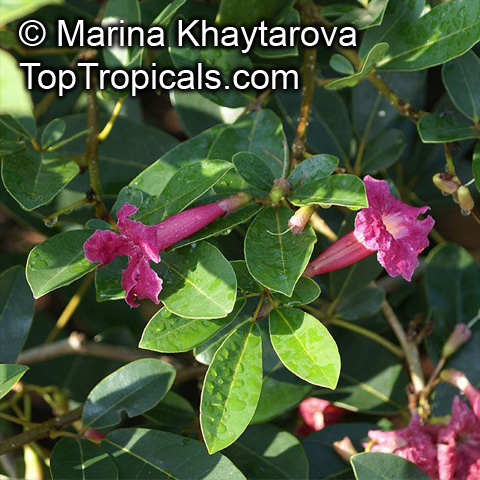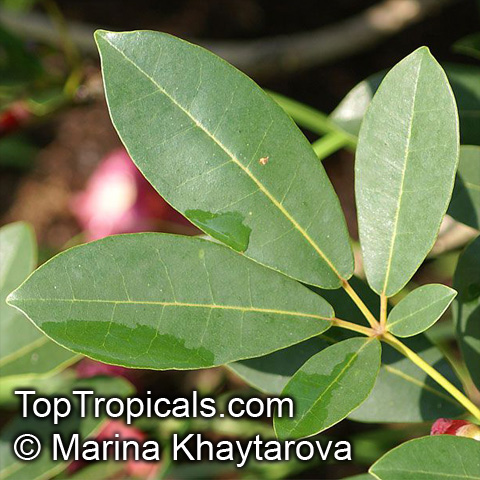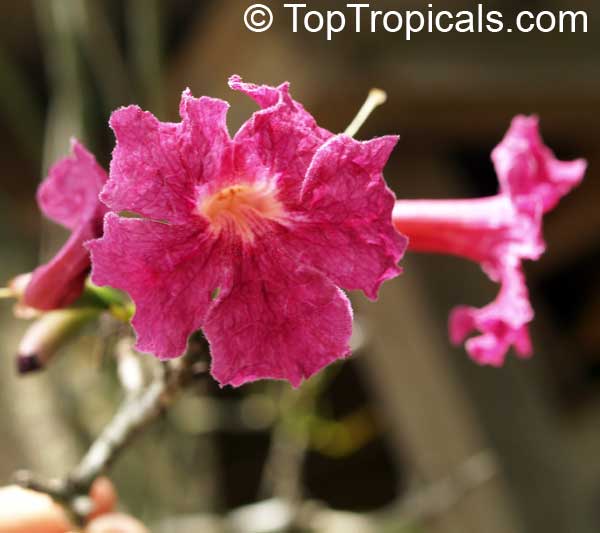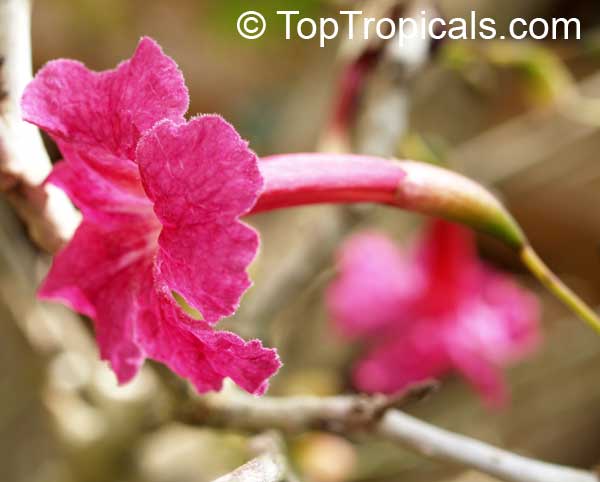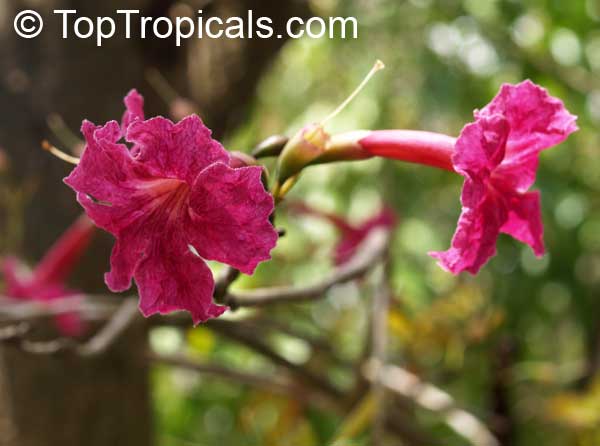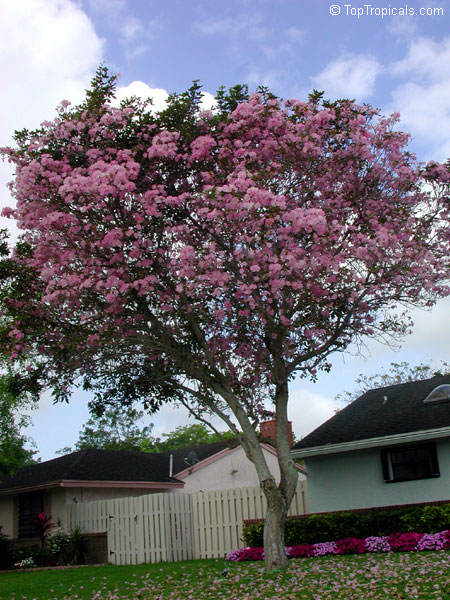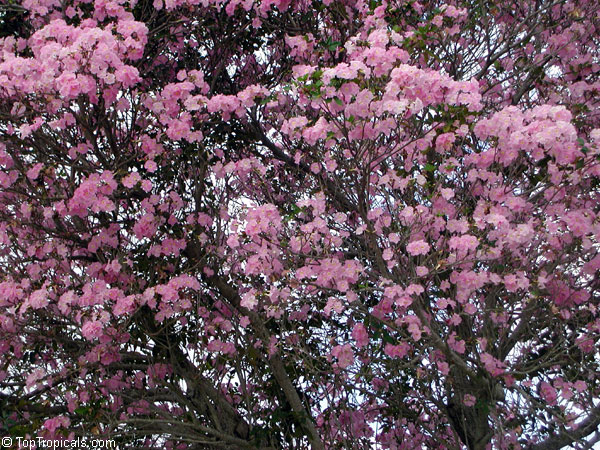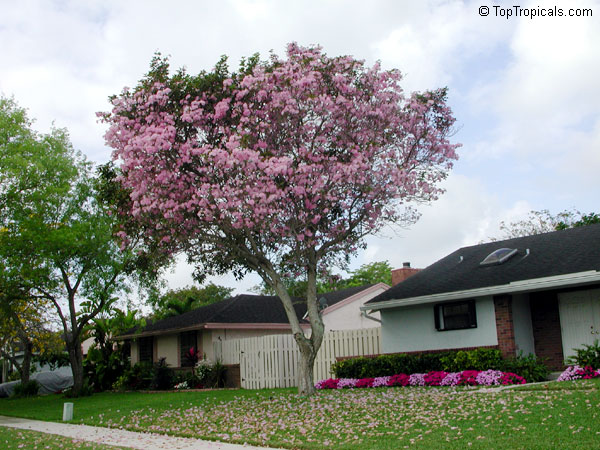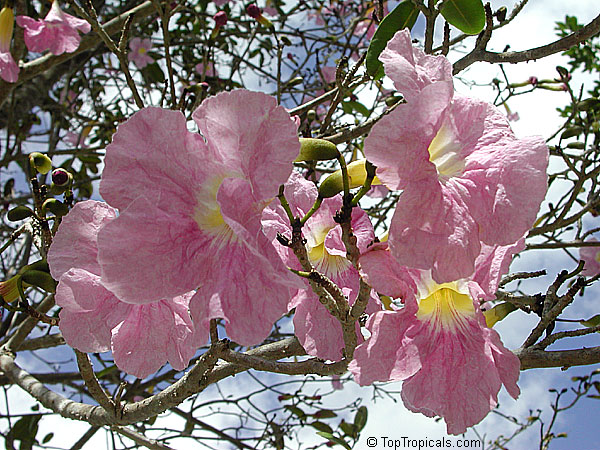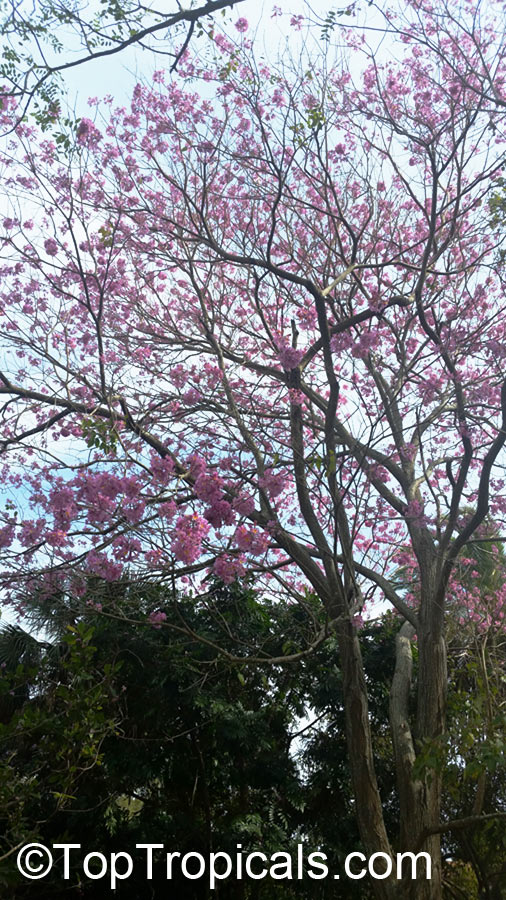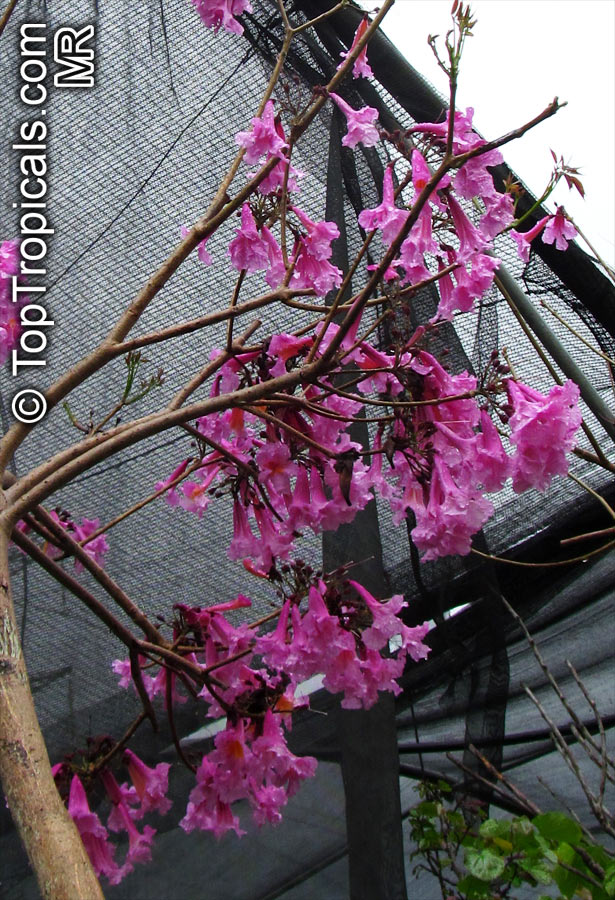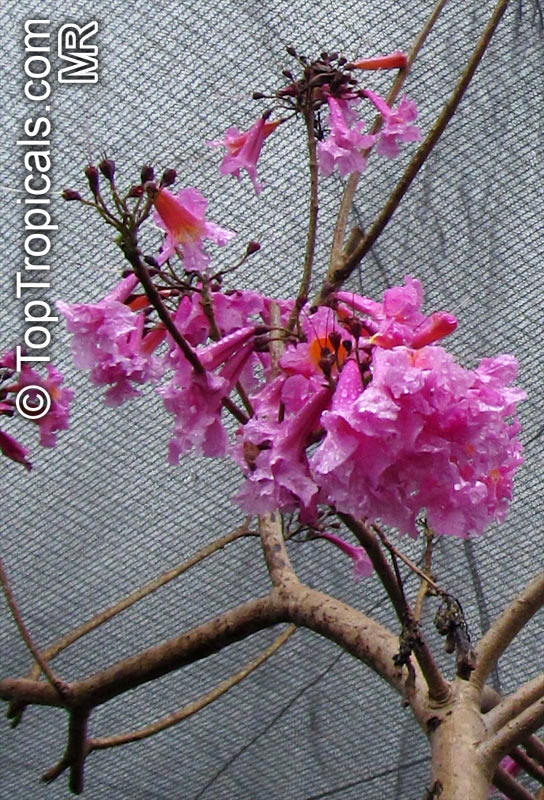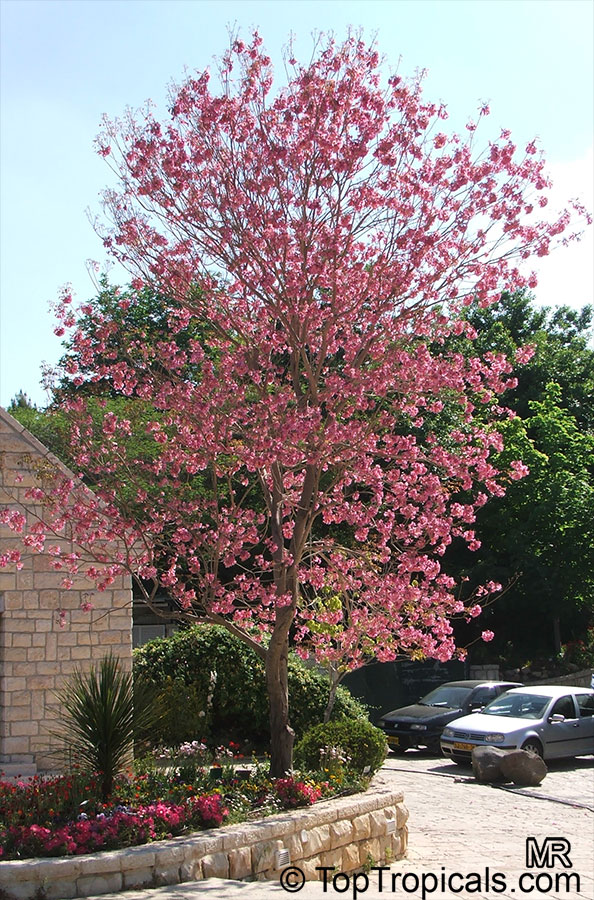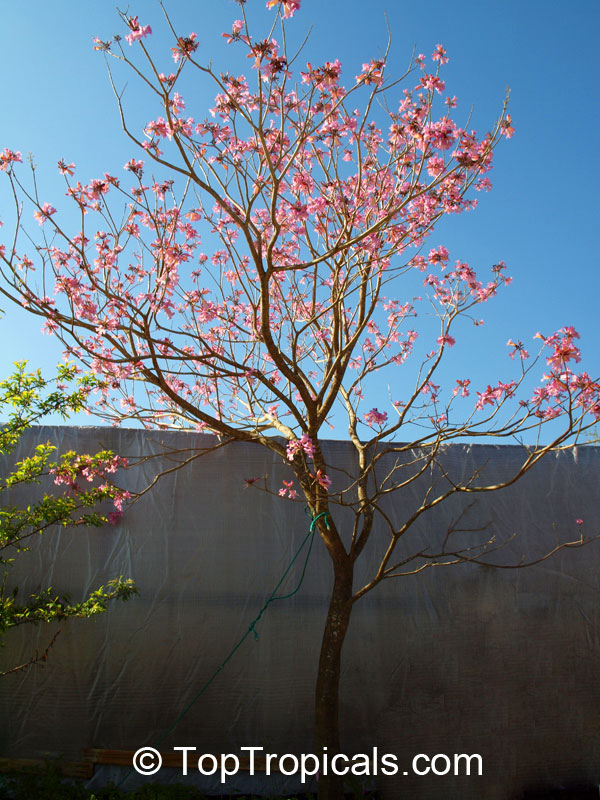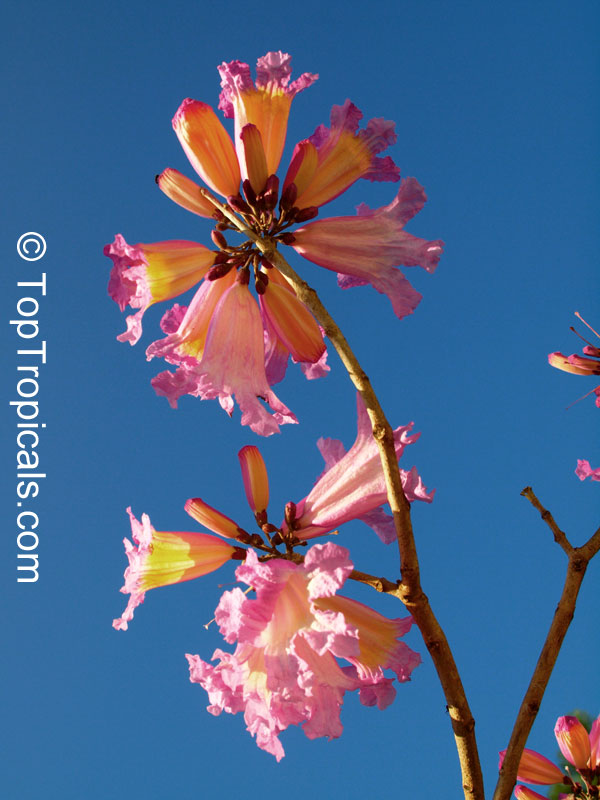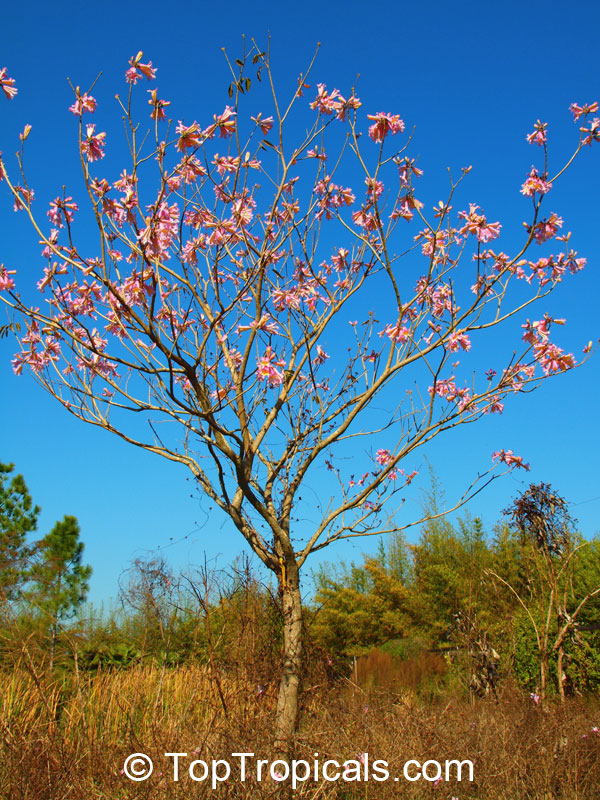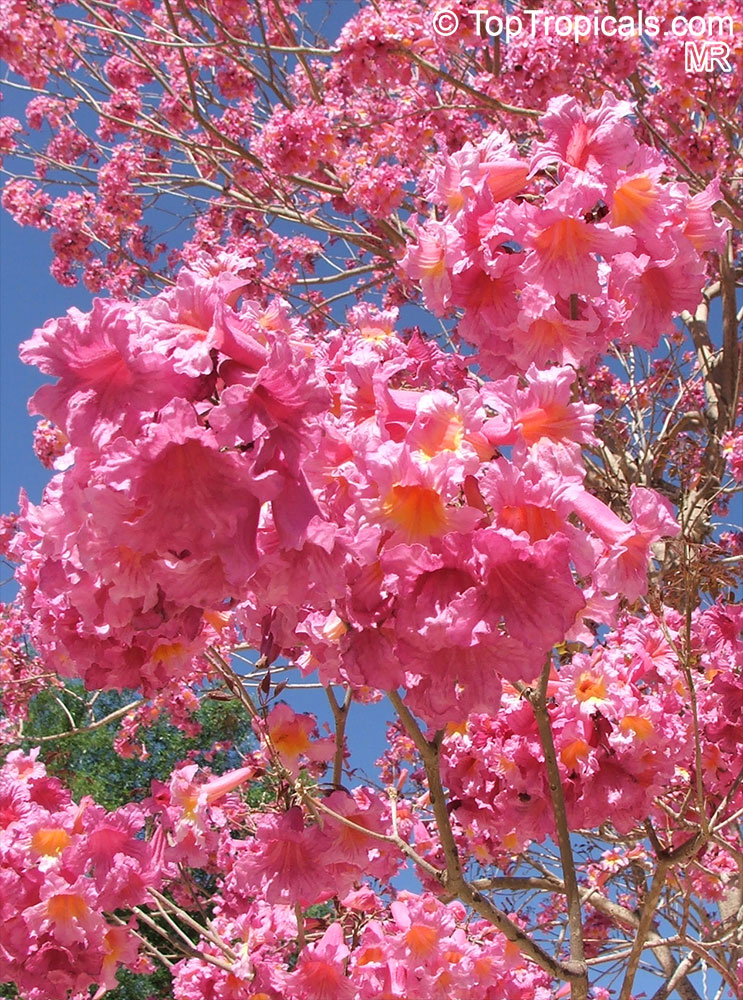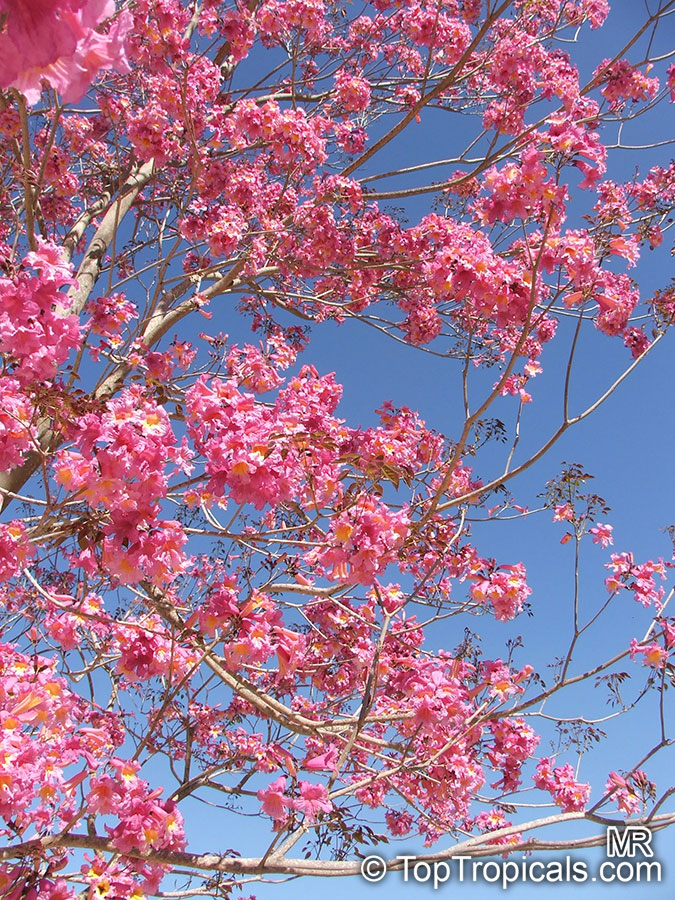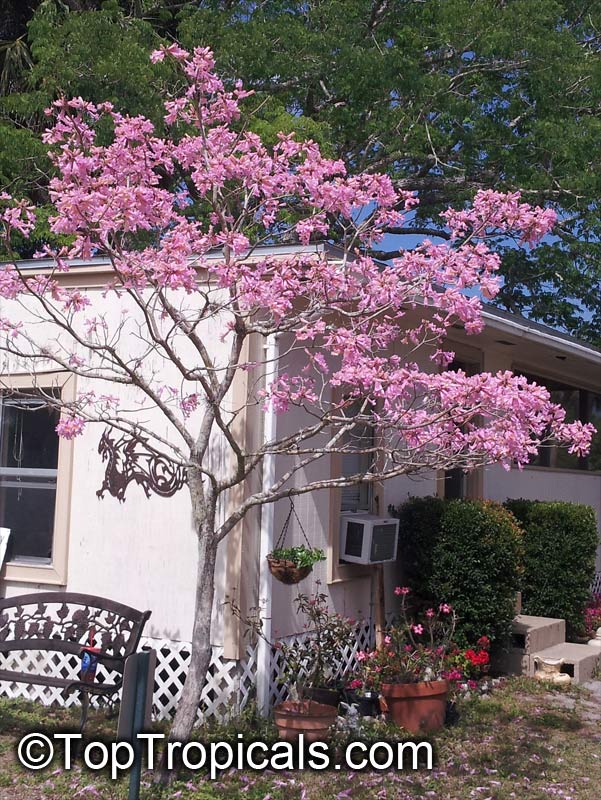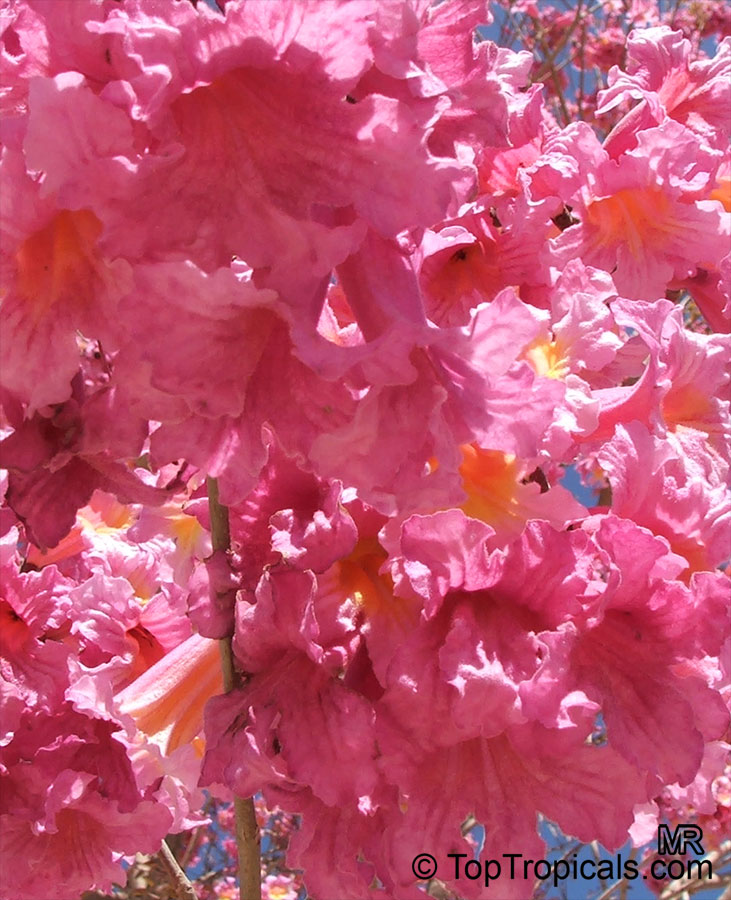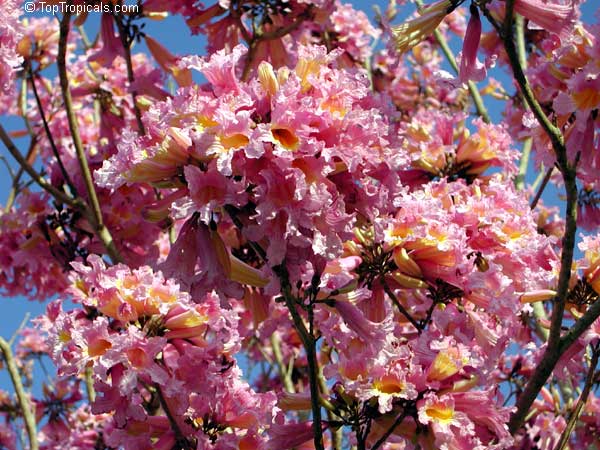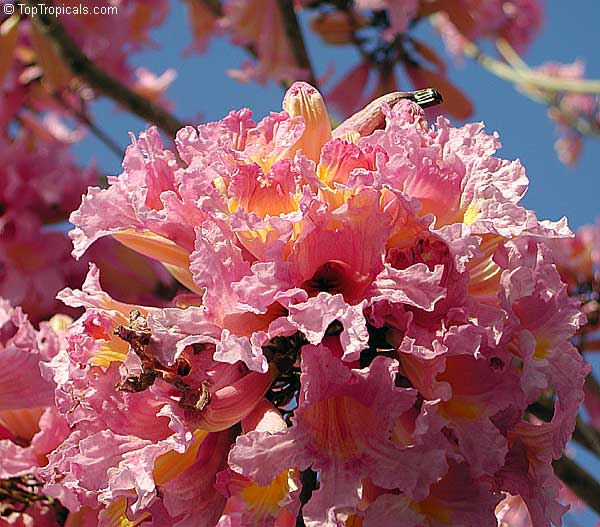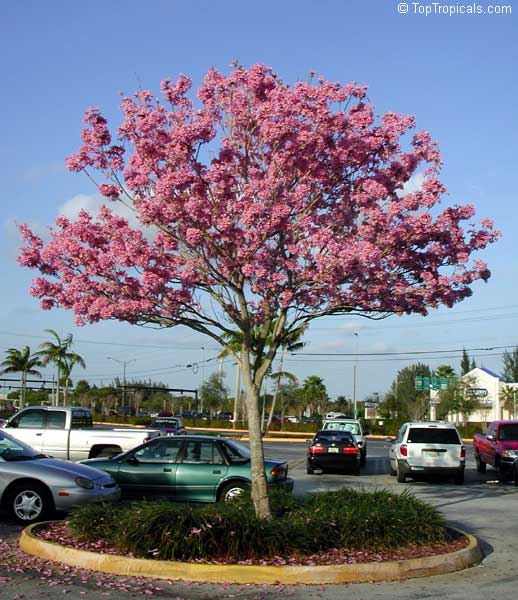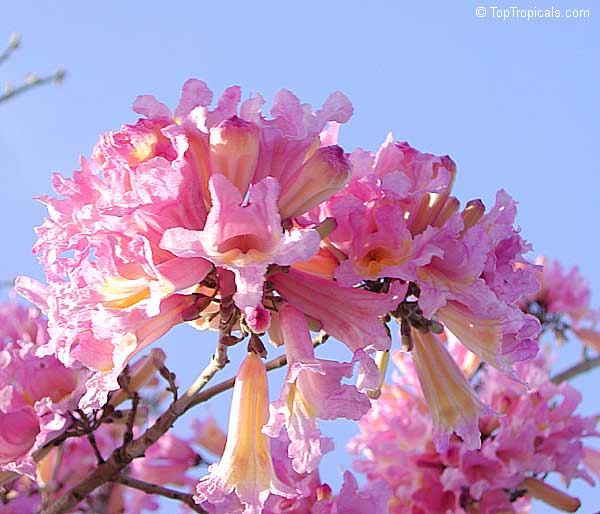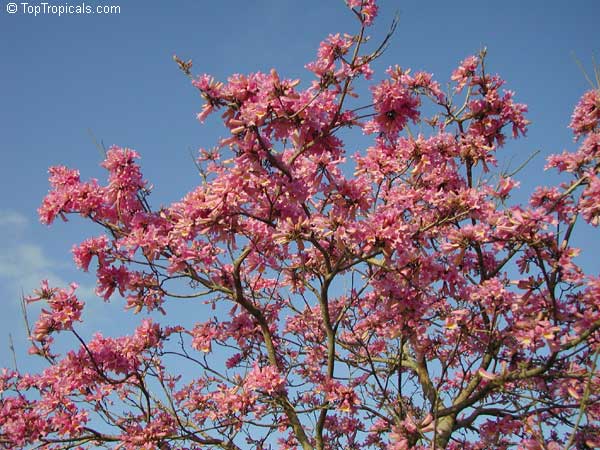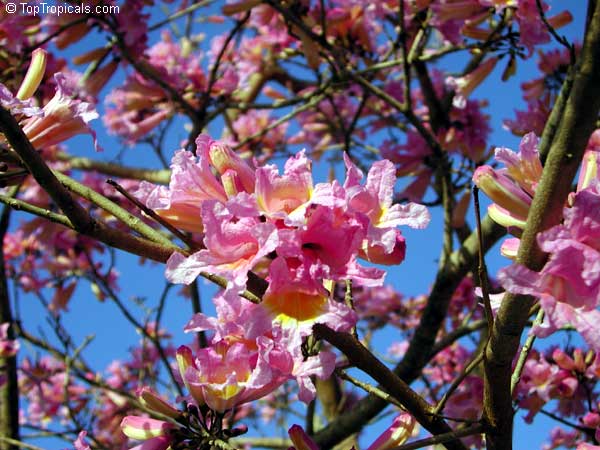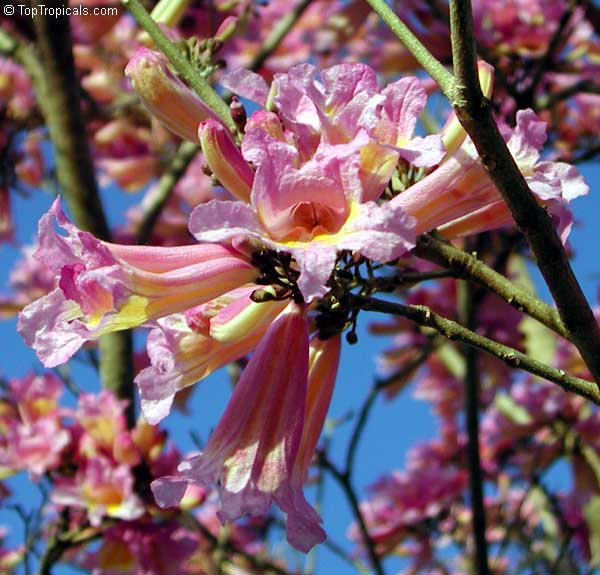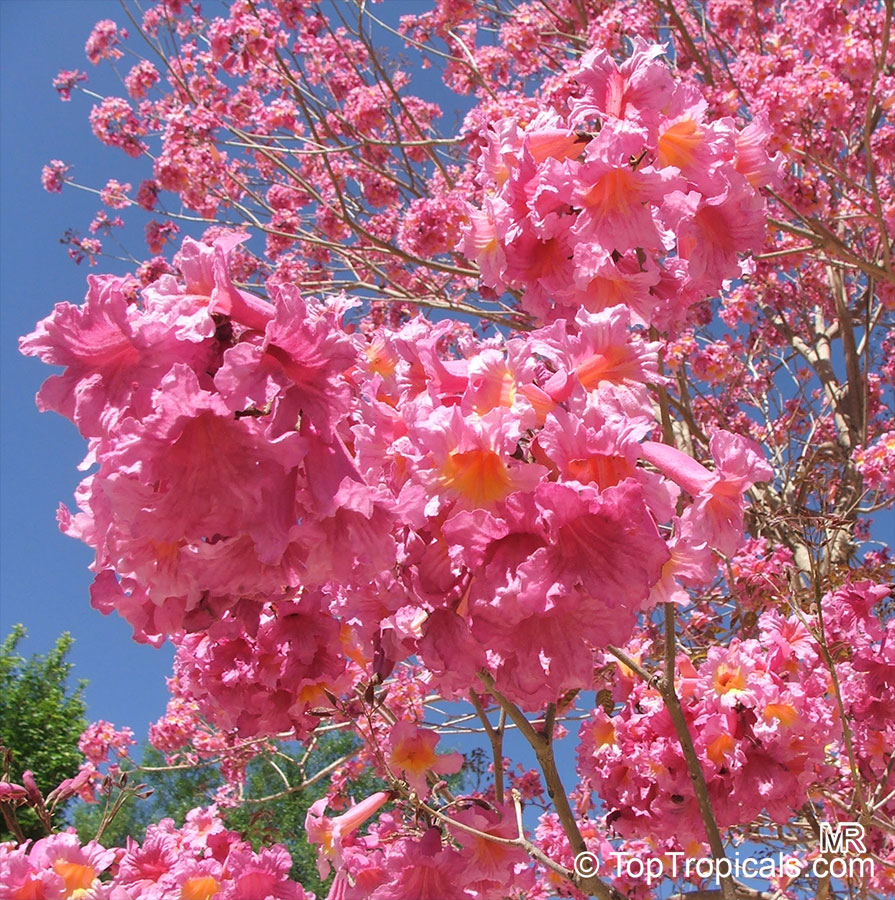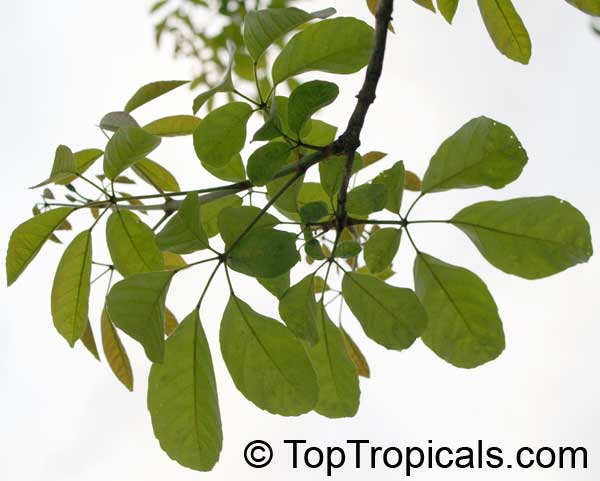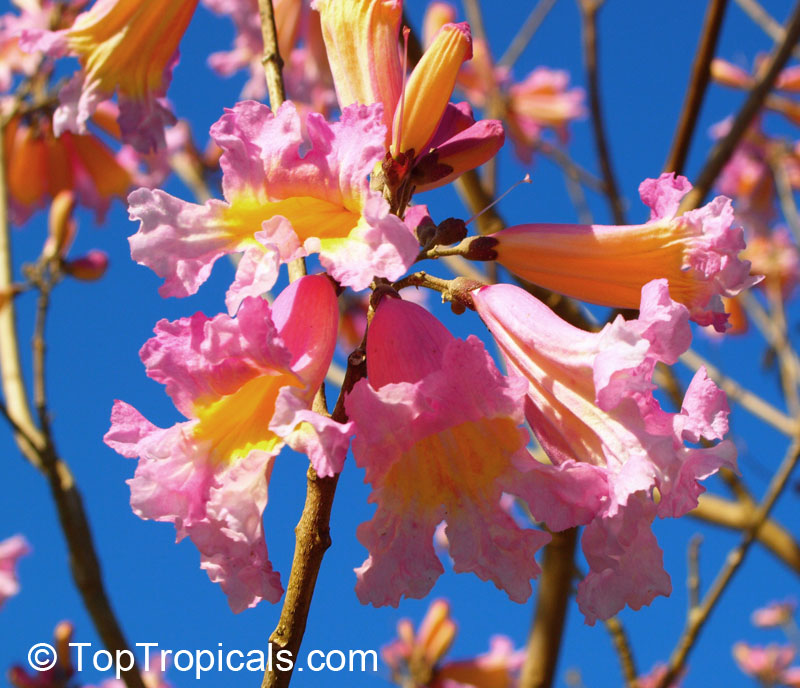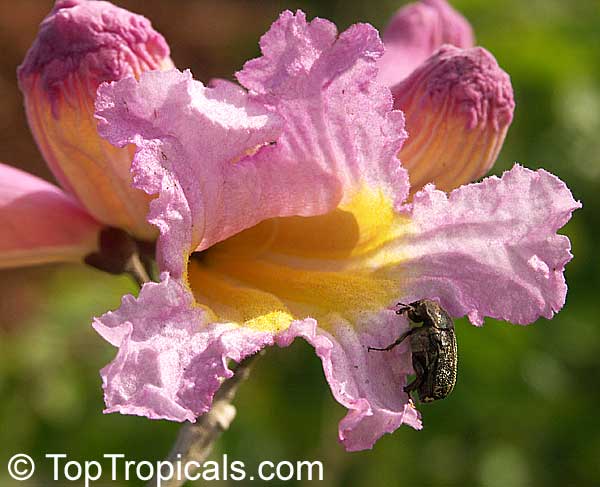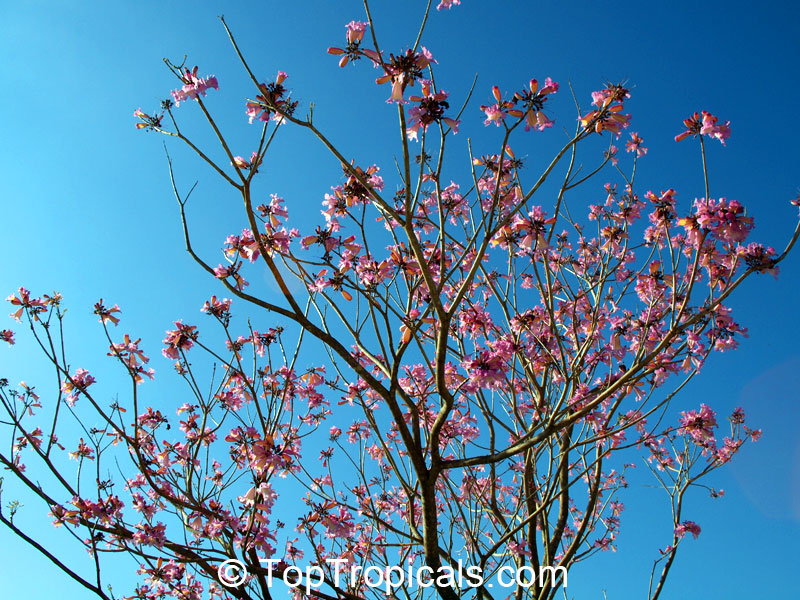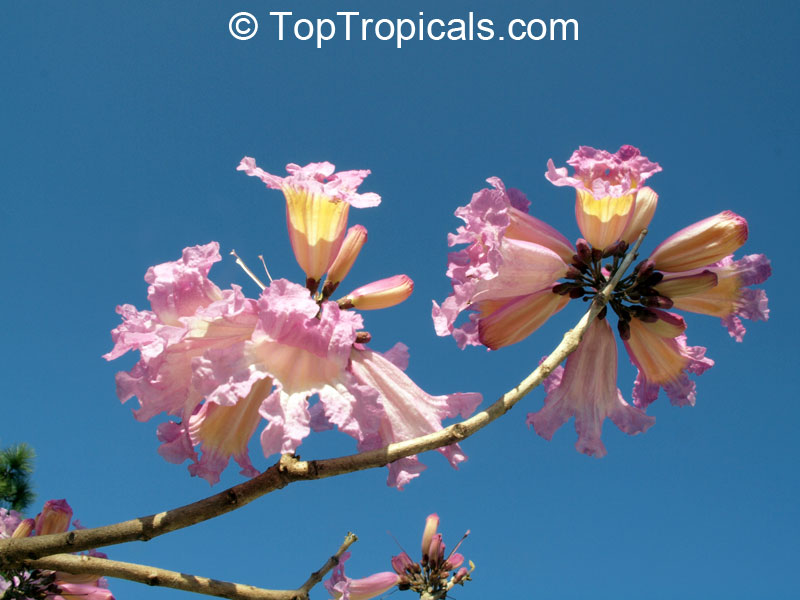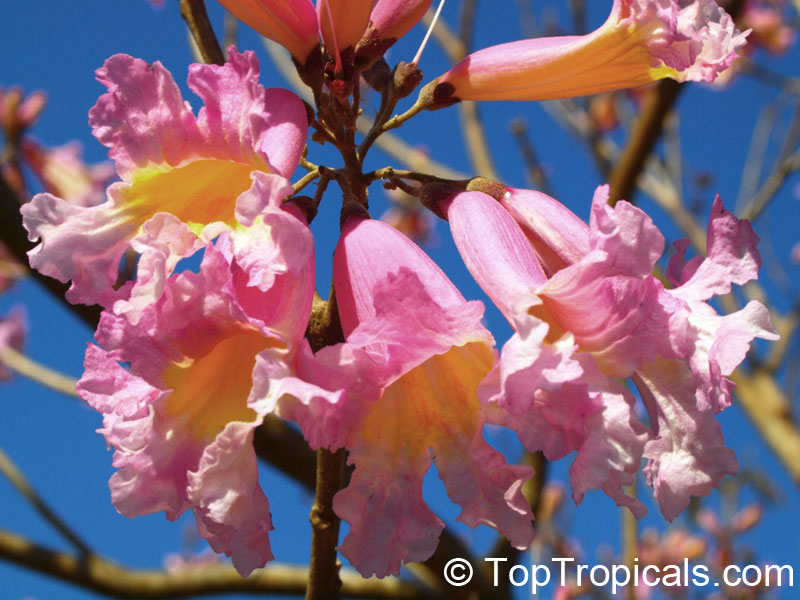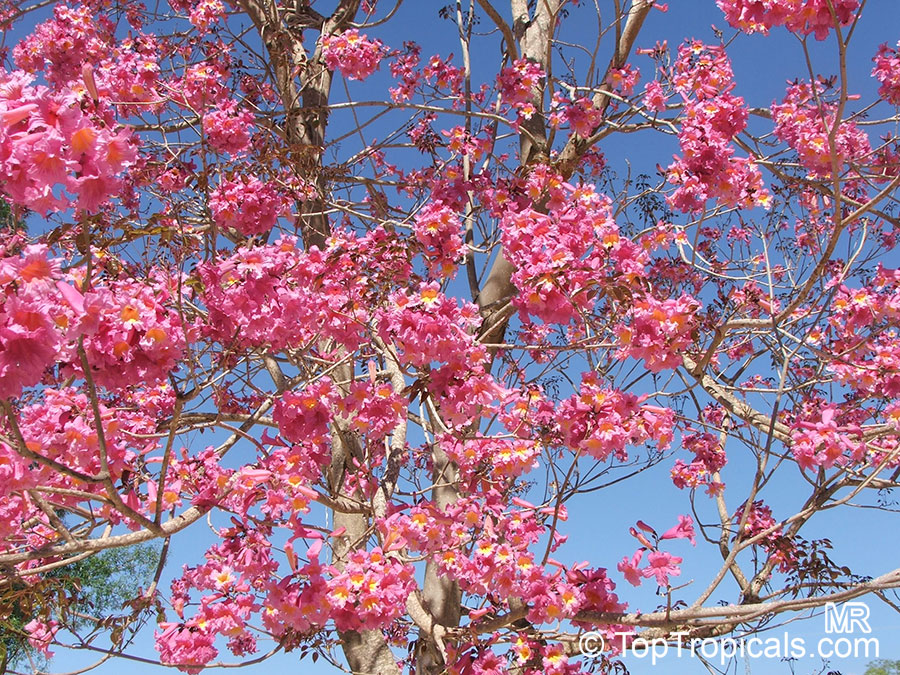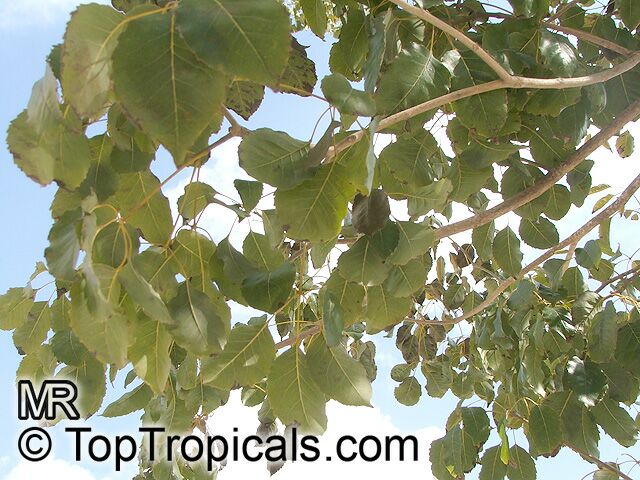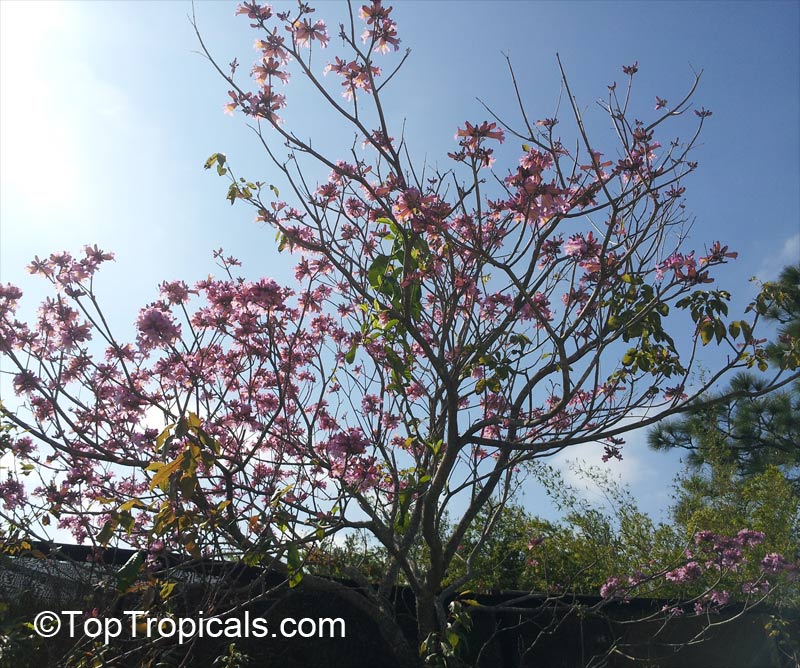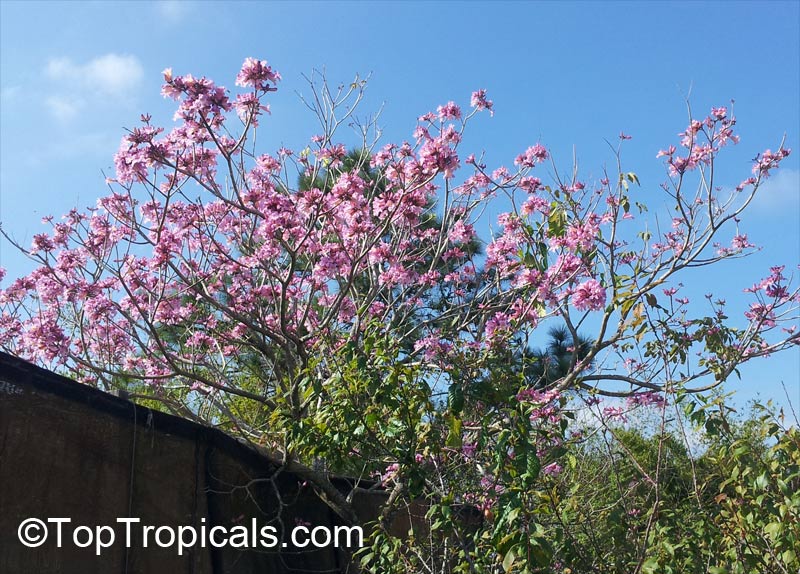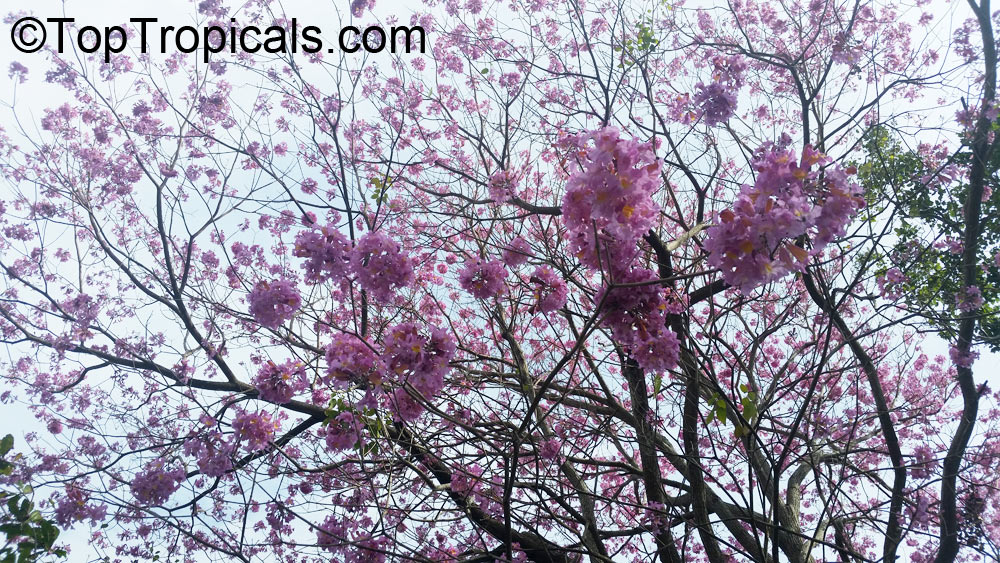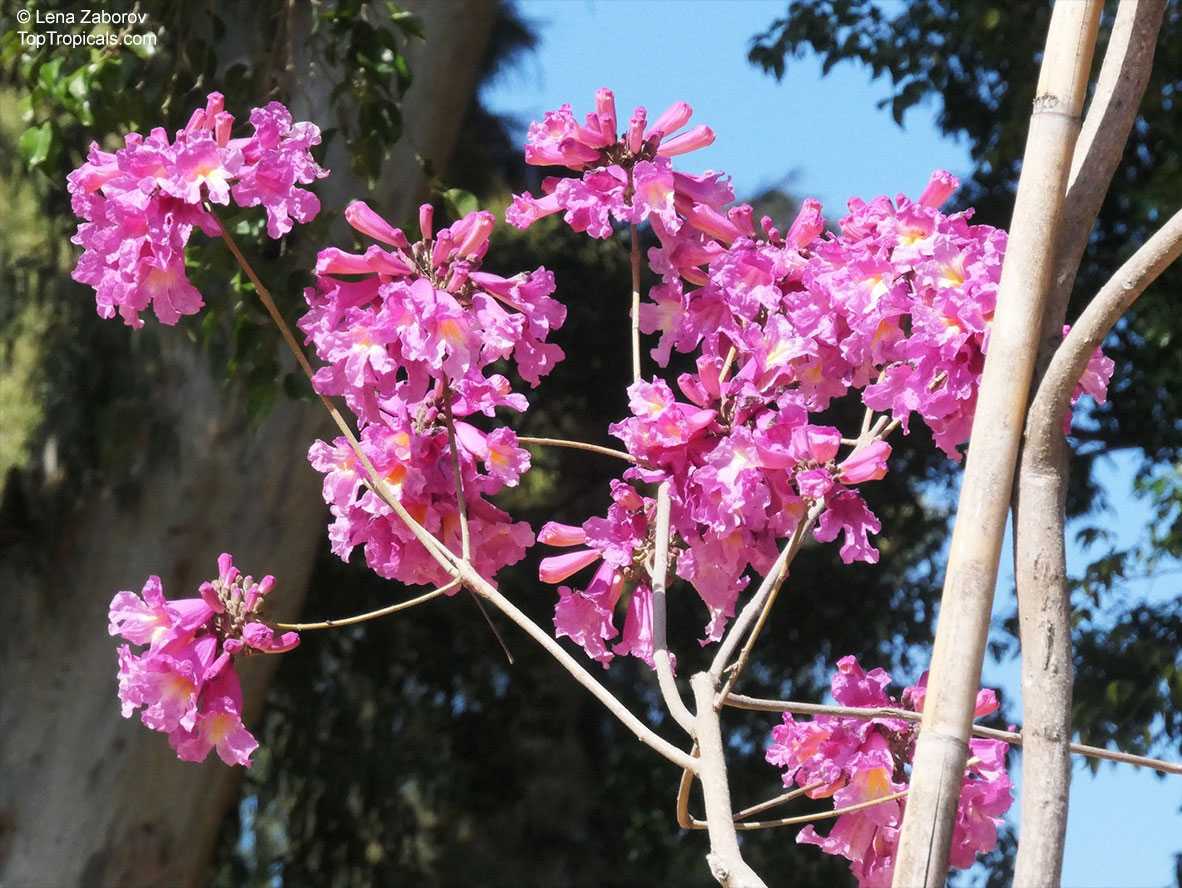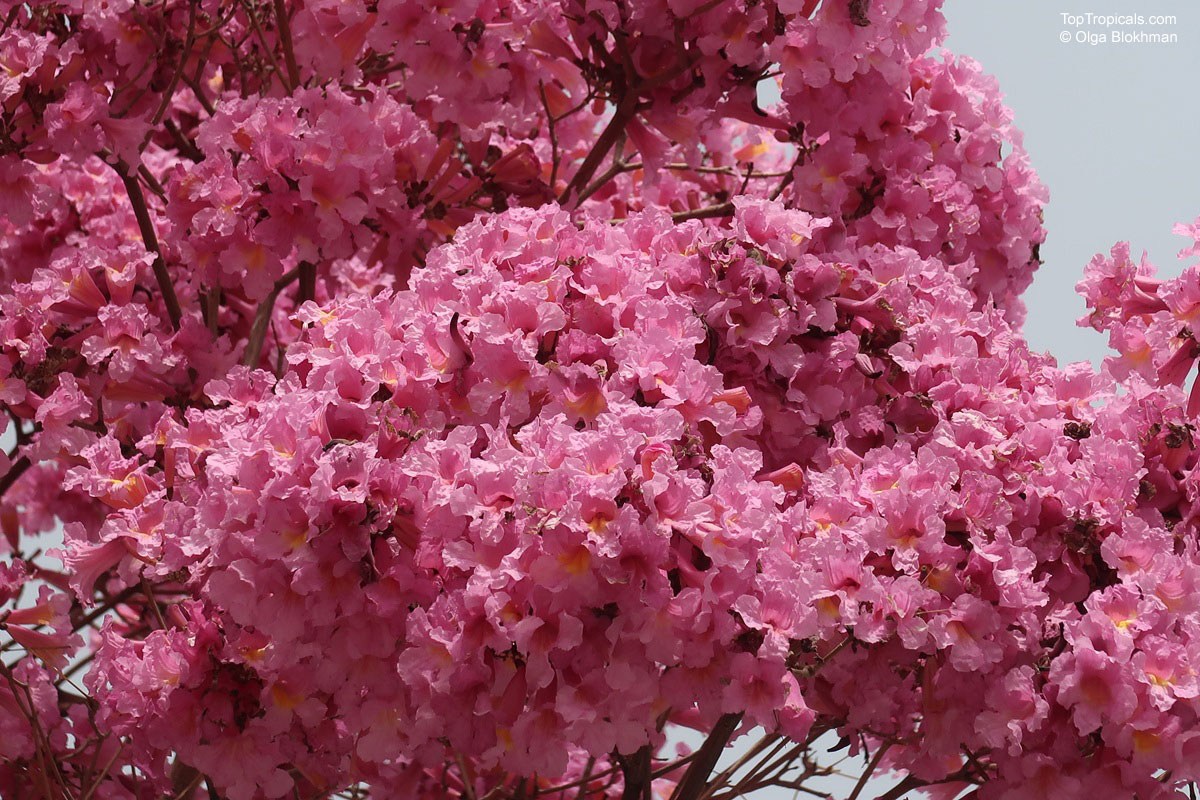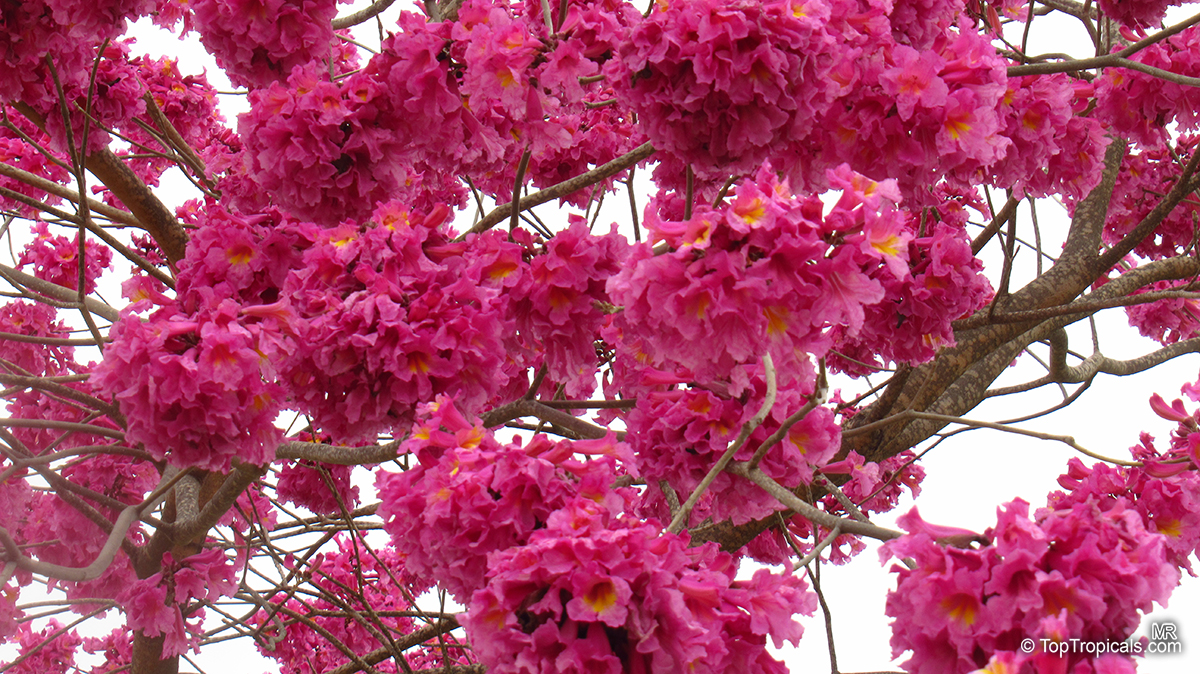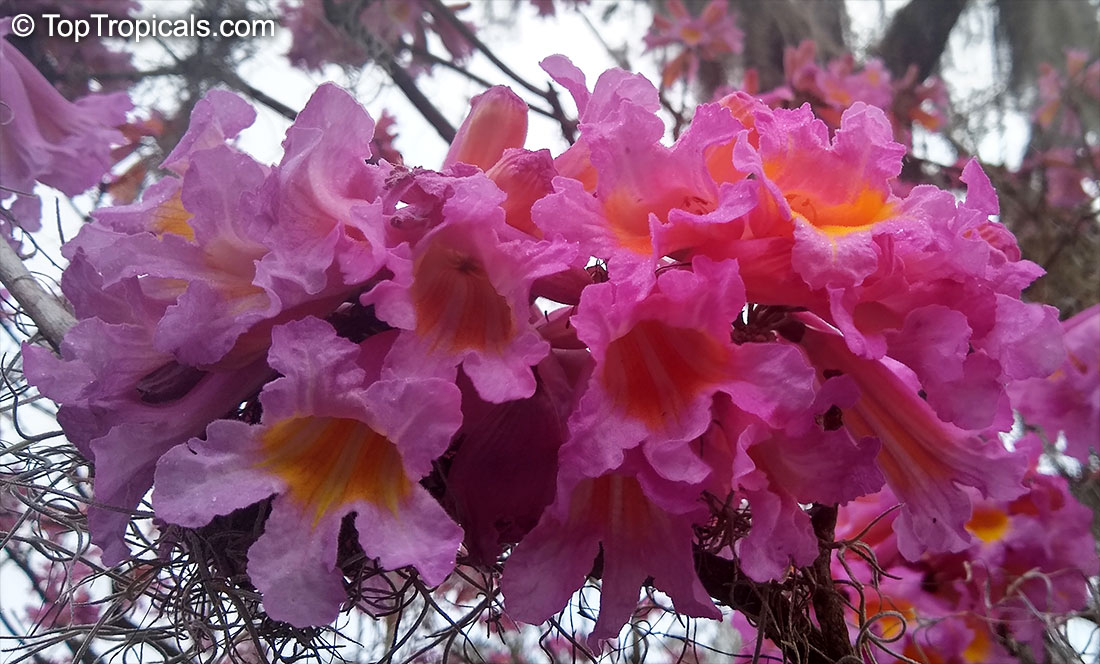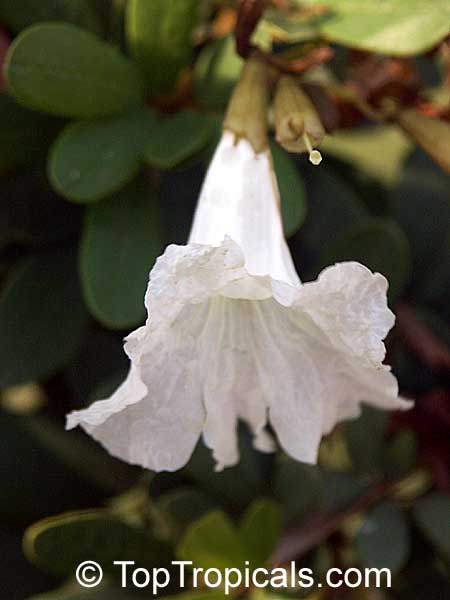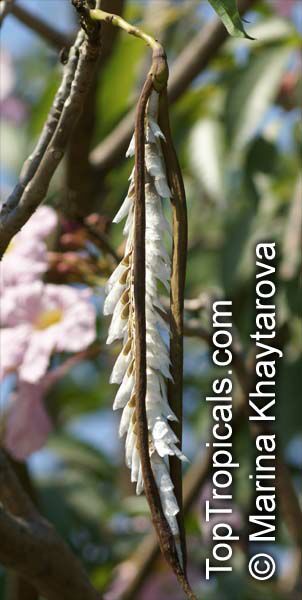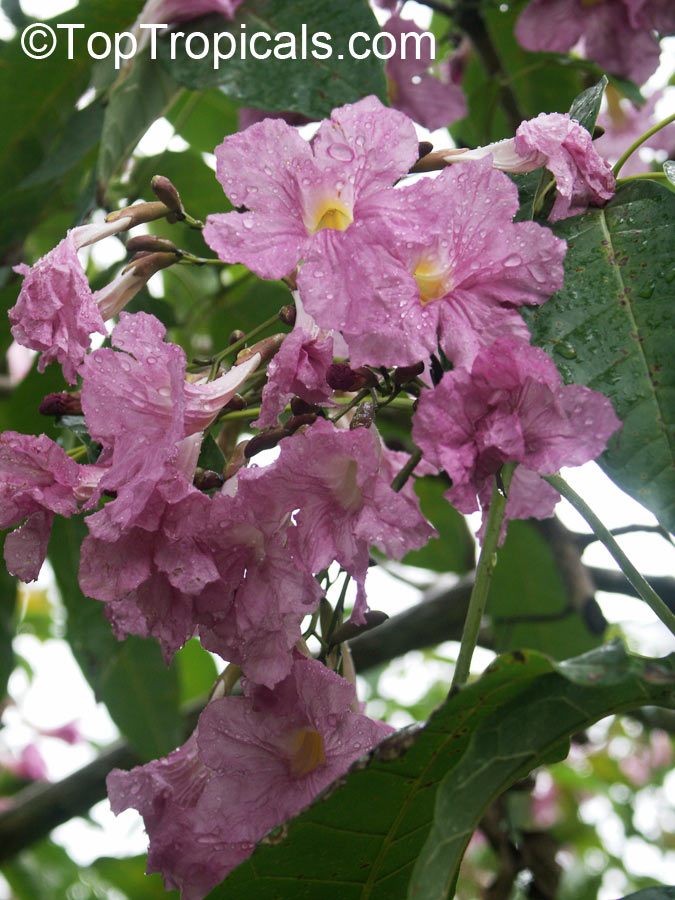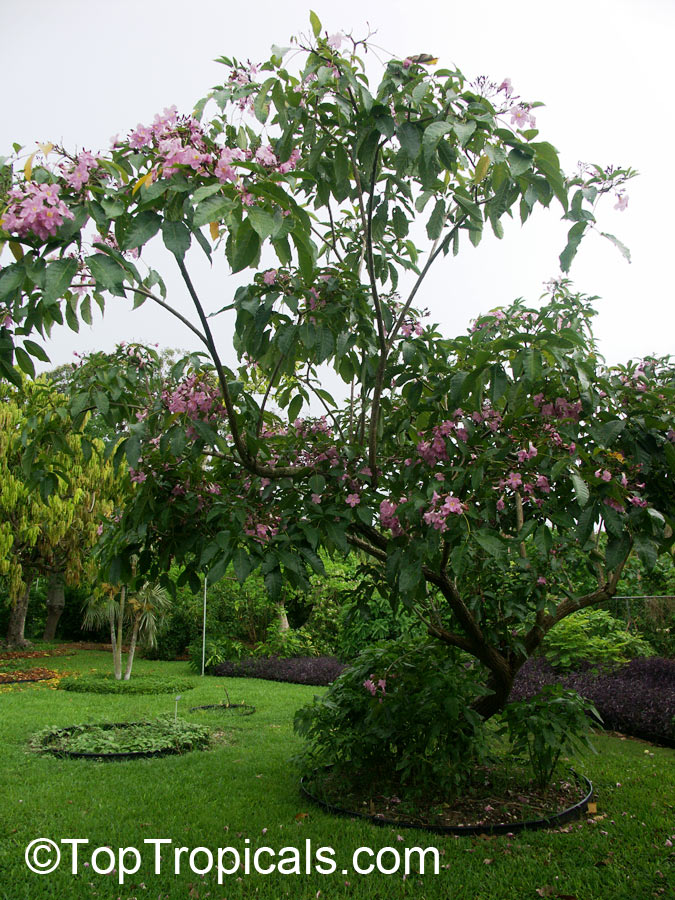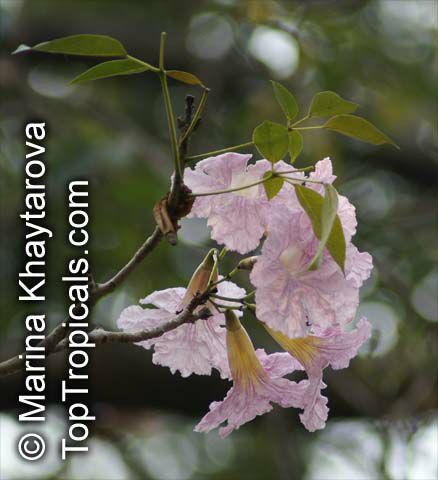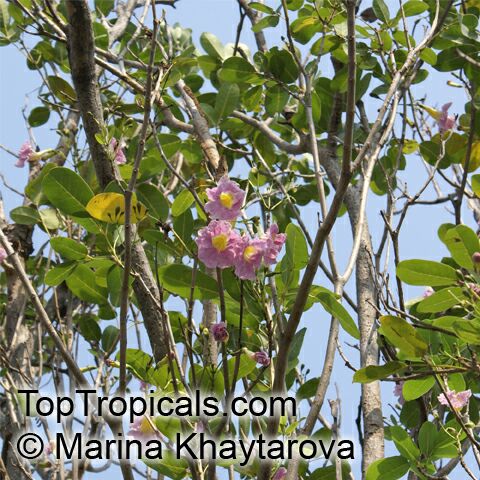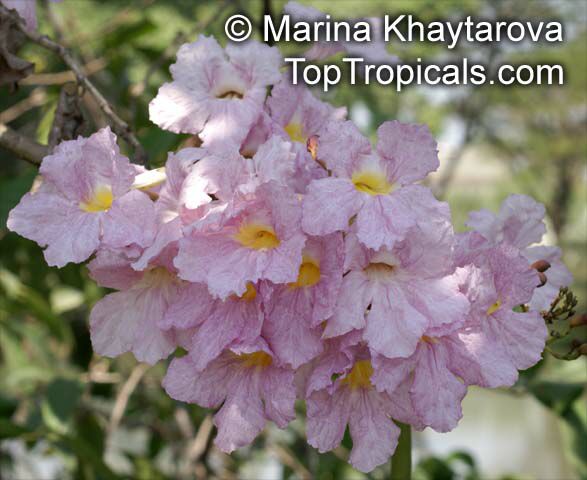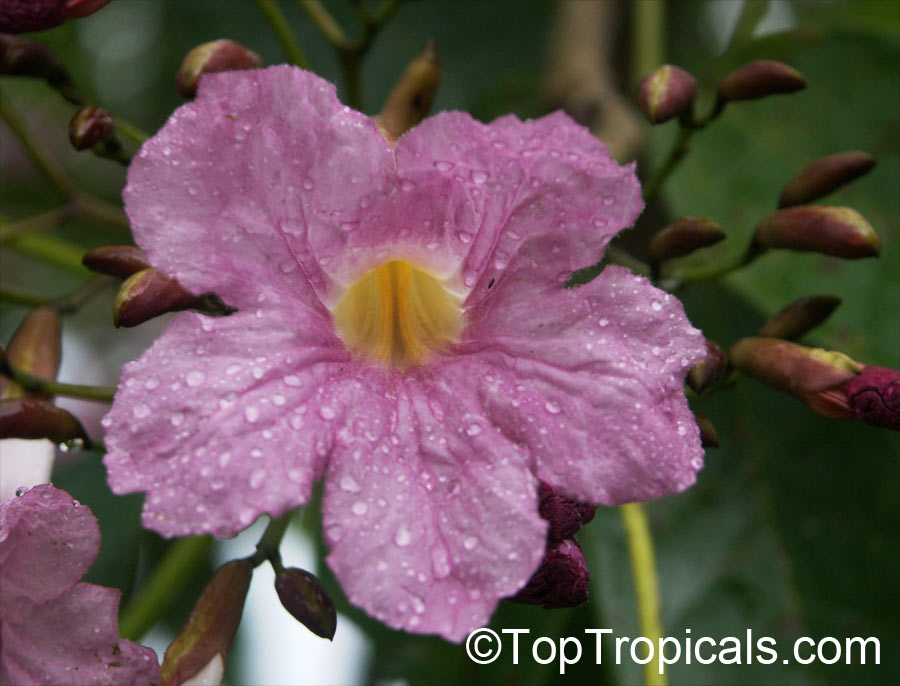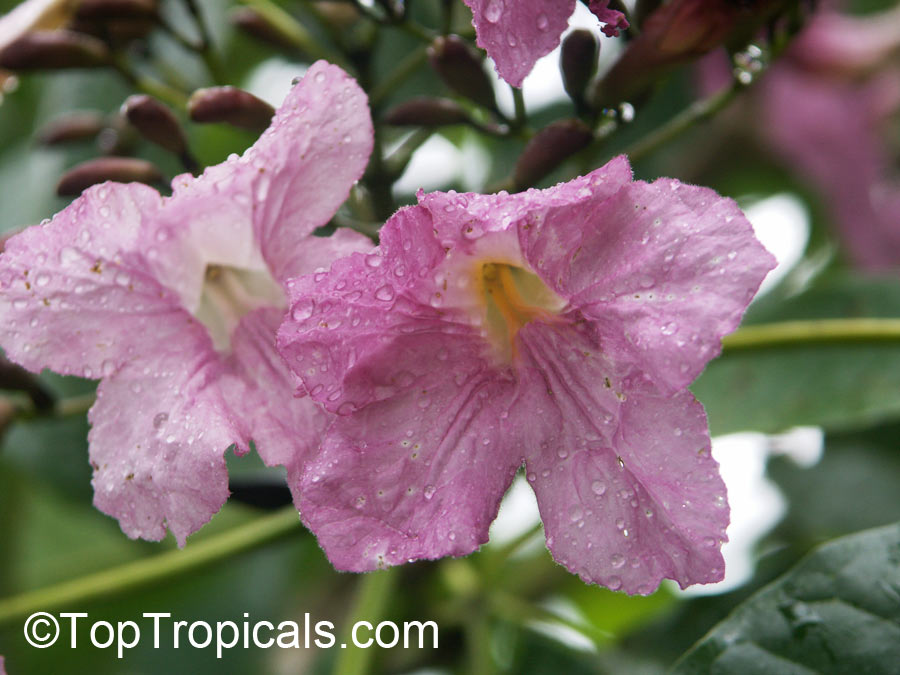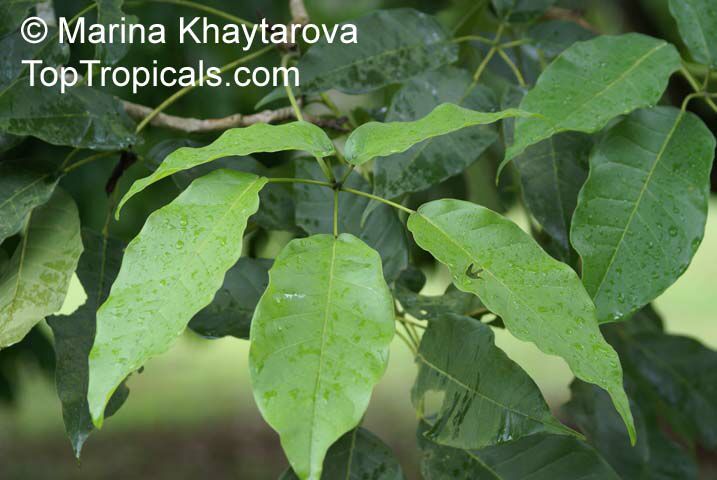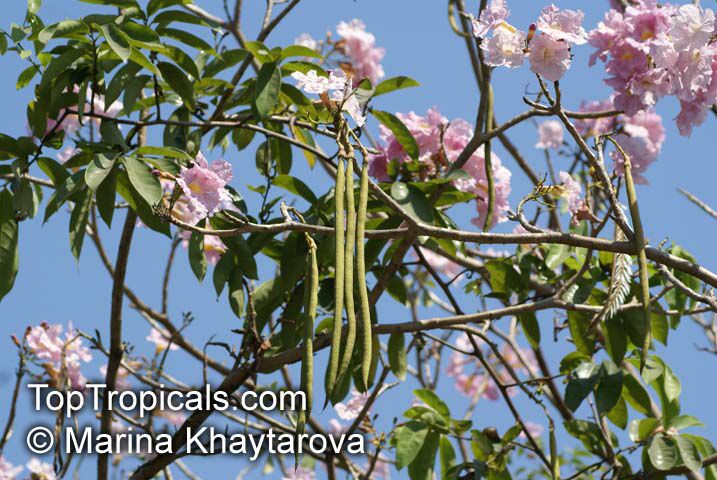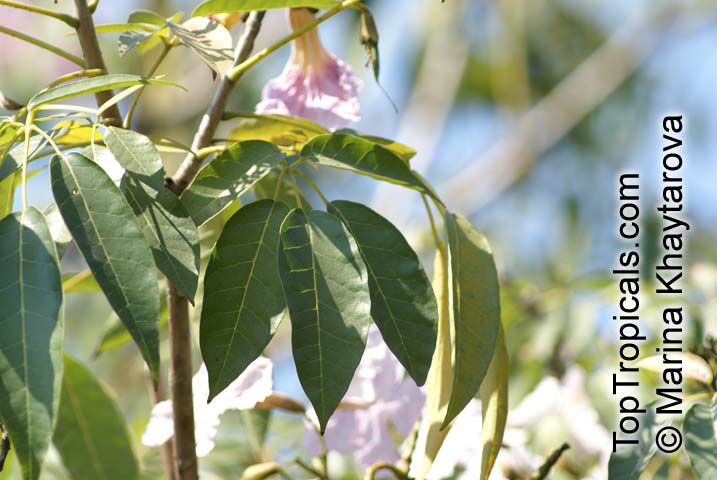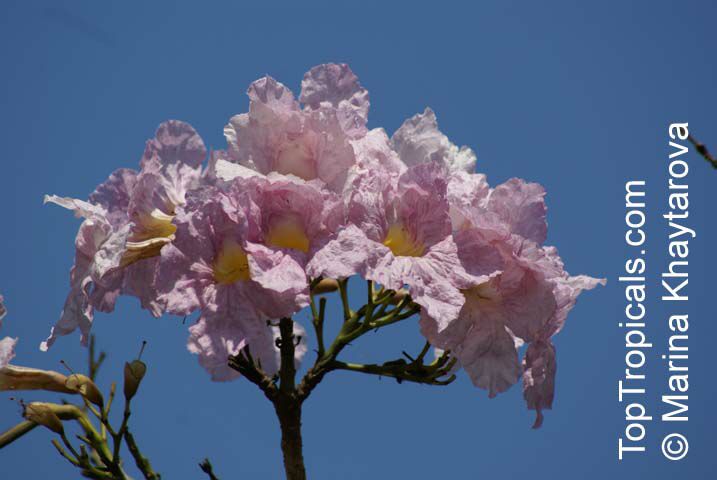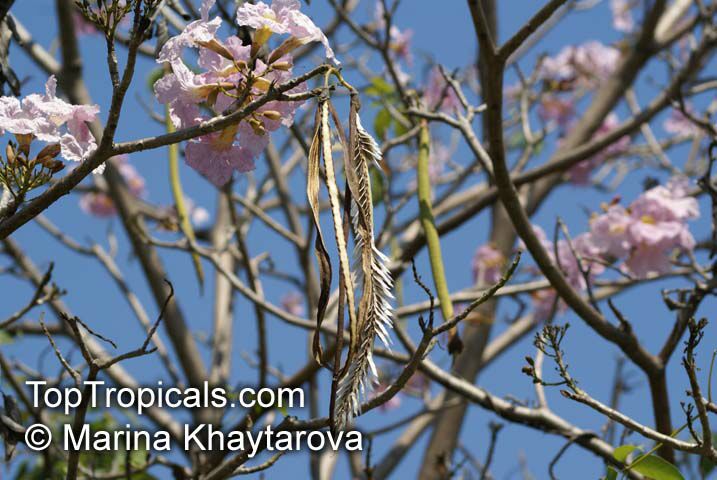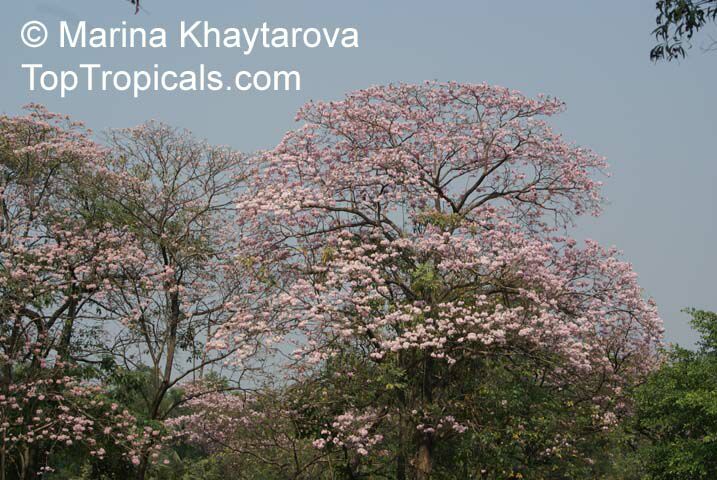Tabebuia - Plant Encyclopedia Results
Top Tropicals Plant Encyclopedia
| Number of plants found: 13 | Next | 
|
Go to page: | 1 | 2 |
Botanical names: Handroanthus chrysotrichus, Tabebuia chrysotricha, Tabebuia chrysantha
Common name: Dwarf Golden Tabebuia
Family: Bignoniaceae
Origin: West Indies






The Dwarf Golden Tabebuia is a small, striking tree ideal for container culture or small gardens. In late winter to spring, when the tree is leafless, it bursts into a stunning display of bright yellow flowers that can bloom over several weeks. With its sparse crown and compact size, this tree is perfect for patios or yards where space is limited. It's also impressively cold-hardy, able to withstand temperatures as low as 26F for a few hours. Whether as a focal point or accent plant, the Dwarf Golden Tabebuia adds a touch of vibrant color to any Southern landscape. Perfect candidate for container culture.
Ordering seeds info
RECOMMENDED SUPPLIES:
Seed Germination Mix #3, professional grade
SUNSHINE-Epi - Seeds and cuttings booster
SUNSHINE Bombino - Young Plant Booster
Botanical names: Tabebuia alba, Tecoma alba
Common name: Lapacho Amarillo
Family: Bignoniaceae
Origin: Brazil






Botanical name: Tabebuia angustata
Common names: Roble Blanco, Blushing Bride, Narrow Trumpet Tree, White Wood
Family: Bignoniaceae
Origin: Caribbean, Cuba and Jamaica






This tabebuia found in woodlands and along streams in Jamaica and is very rare in cultivation. It has has very pretty, rosy white blooms coming in clusters. The tree can grow up to 40 feet high, tolerates some drought and poor soils.
Botanical names: Tabebuia bahamensis, Tabebuia turquinensis, Tabebuia affinis, Tabebuia leonis
Common names: Dwarf Bahamian Trumpet Tree, Five Fingers
Family: Bignoniaceae
Origin: Bahamas, Cuba








Tabebuia bahamensis grows as a large shrub, 5-10 feet tall and can grow as small tree of 10-20 feet tall under favorable conditions. It produces exquisitely beautiful Pink and White, off-White flowers and this makes it perfect for ornamental planting. This plant can tolerate moderate water and is salt-tolerant too so it could be grown near the seaside. In terms of cold-hardiness, it can survive toughest of cold as it is mature enough to tolerate temperatures as low as low 30s F for a short time.
For growing Tabebuia bahamensis in pot in cold regions, it is very important to keep the plant well protected from extreme cold temperatures. Best way to ensure that is by bringing the pot inside the house for the winter or if it cannot be done then keeping it in more protected areas outdoors like garage or porch is recommended. Also, the pot should be insulated and well protected by covering the soil with mulch, burlap panels and other suitable materials. Furthermore, if the soil gets really dry, consider using overhead irrigation system to provide moisture. Lastly, make sure to fertilize your plants in spring and summer with slow-release fertilizer to encourage blooming and promote healthy foliage growth.
All in all, Tabebuia bahamensis is a stunning plant native to the Bahamas and Cuba, as it magnificently displays silky soft, light pink to white blooms on its branches. Highly tolerant of different types of soil, and low maintenance, it is ideal for ornamental use in the landscape or for container gardening in regions with cold temperatures.
Botanical names: Tabebuia caraiba, Tabebuia argentea
Common name: Silver Trumpet Tree
Family: Bignoniaceae
Origin: Brazil






This Tabebuia is one over 100 species with blooms starting near the first day of spring in South Florida. Its masses of yellow trumpet flowers catch everyones eye in season. The foliage is mostly deciduous. Some trees lose leaves prior to blooming while others can hold some of their old leaves while in flower. One good trick is to cut off all added water 6-8 weeks before spring. This will encourage leaf drop and produce a much heavier show of flowers. All Tabebuias in irrigated landscapes are poorer bloomers due to this excess water. The trunk and wood of this Tabebuia is also very interesting. This variety has brittle wood that breaks in strong winds, but the tree always comes back. Newly planted large field grown trees take several years to stabilize root strength, so strong storms can easily topple large, newly planted trees. Stand them up immediately. Use this tree for small spaces, in full sun, on well drained soil. The tree has no pests.
Botanical names: Tabebuia haemantha, Bignonia haemantha
Common names: Blood-Red Trumpet Tree, Roble Cimarron, Roble Cimmaron
Family: Bignoniaceae
Origin: Caribbean







Rare species of Tabebuia from Caribbean. Small tree with pretty mauve flowers covering the tree. There are leaves along with flowers, unlike the other kinds of Tabebuia that loose all the leaves and left with just flowers. This one will bloom on and off all year.
Tabebuia 'Carib Queen' is Tabebuia heterophylla subsp. Pallida X Tabebuia haemantha.
Botanical name: Tabebuia heterophylla
Common name: Pink Trumpet Tree
Family: Bignoniaceae
Origin: Tropical America








Tabebuia is a genus containing around 100 species, many widely used in hot-weather gardens everywhere. In regions with a sharp division between wet and dry seasons the Pink Trumpet Tree annually sheds its foliage and the leafless branches are covered with clusters of pale to deep pink flowers.
Botanical names: Tabebuia impetiginosa, Handroanthus heptaphyllus, Handroanthus impetiginosus, Tabebuia avellanedae
Common names: Pink Tabebuia, Ant Wood, Pau DArco, Ipe Roxo, Lapacho, Taheebo
Family: Bignoniaceae
Origin: Tropical America
Hardiness: 30°F









Tabebuia impetiginosa Dwarf Pink Tabebuia is a deciduous tree that can reach a height of 10-20 ft in native conditions can be much taller. It grows best in full sun and requires little care, needing only a moderate amount of regular water once established. This attractive species is often planted in wa
Botanical name: Tabebuia riparia
Common name: White Tabebuia
Family: Bignoniaceae
Origin: South East Asia





This species of tabebuia has snow white flowers and is very rare.
Botanical name: Tabebuia rosea
Common names: Rosy Trumpet Tree, Pink Poui, Pink Tecoma Tree
Family: Bignoniaceae
Origin: Tropical America







Tabebuia rosea is a wide upright evergreen or deciduous tree with a a long smooth trunk. Leaves are oblongs to ovate-elliptic, leathery, scaly and mid- to dark green in color. Funnel-shaped, white, pink or lilac flowers with yellow eyes fading to white are produced.
| Next |  |
Use link to repeat this search:
https://toptropicals.com/cgi-bin/garden_catalog/cat.cgi?find=Tabebuia&search_op=and&keyword_op=and&language=e&number=10
&no_change_lang=1&user=tt&sale=1&first=0
